Perge is one of the easiest and most rewarding ancient sites you can visit from Antalya. Situated just 25 minutes east of the city center, it’s incredibly accessible, whether you're hiring a car, catching a tram to Aksu, or joining a group tour that combines several historical sites into one outing.
Perge is close enough that you could leave after breakfast and be back in Antalya before the afternoon heat, yet it feels like stepping into an entirely different world—one where carved marble and weathered archways tell stories that stretch back more than two thousand years.
Why visit Perge?
Once a thriving Greco-Roman city, Perge was originally founded during the Hittite period but flourished under Roman rule. The city had a stadium large enough for 12,000 spectators, a series of impressive Roman baths, a well-preserved agora, and long colonnaded streets built around an advanced water system. Unlike some more touristed sites, Perge feels open, quiet, and spacious, even when other visitors are around.
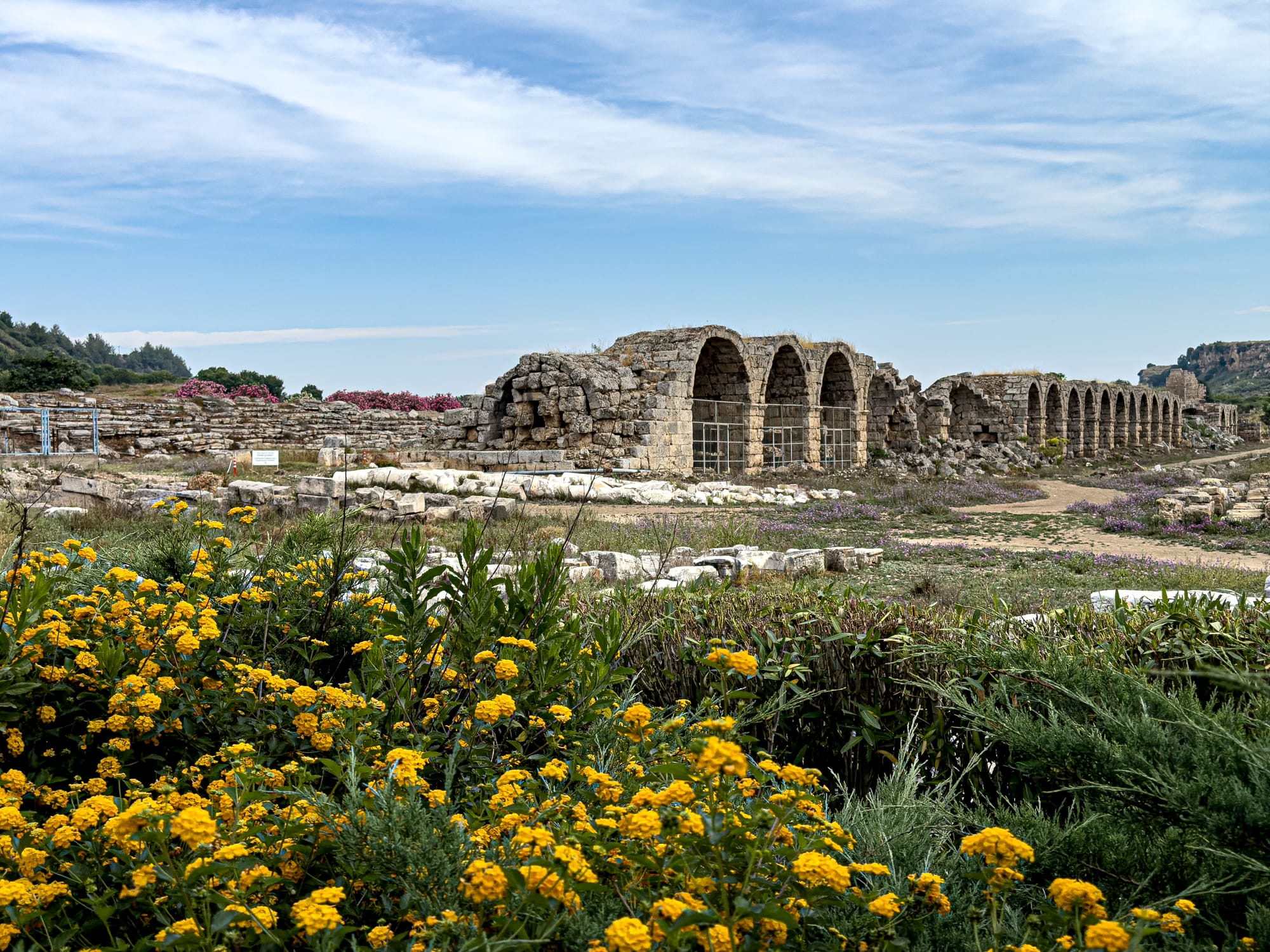
A visit to Perge ideal for travelers who want to understand how people once lived, moved, and gathered. Whether you’re a history fan or just curious, there’s something about the layout and condition of the site that makes it incredibly easy to imagine daily life here.
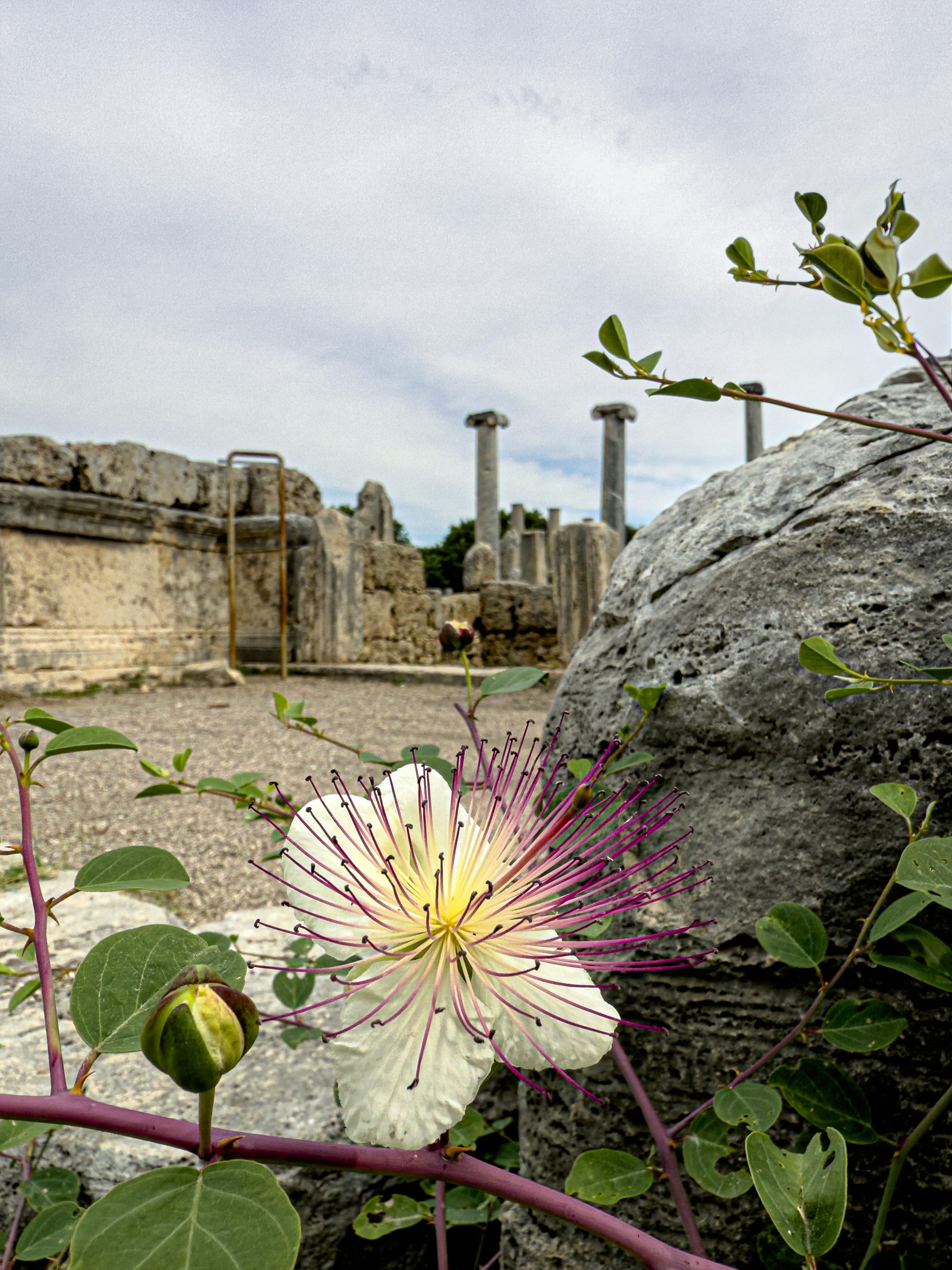
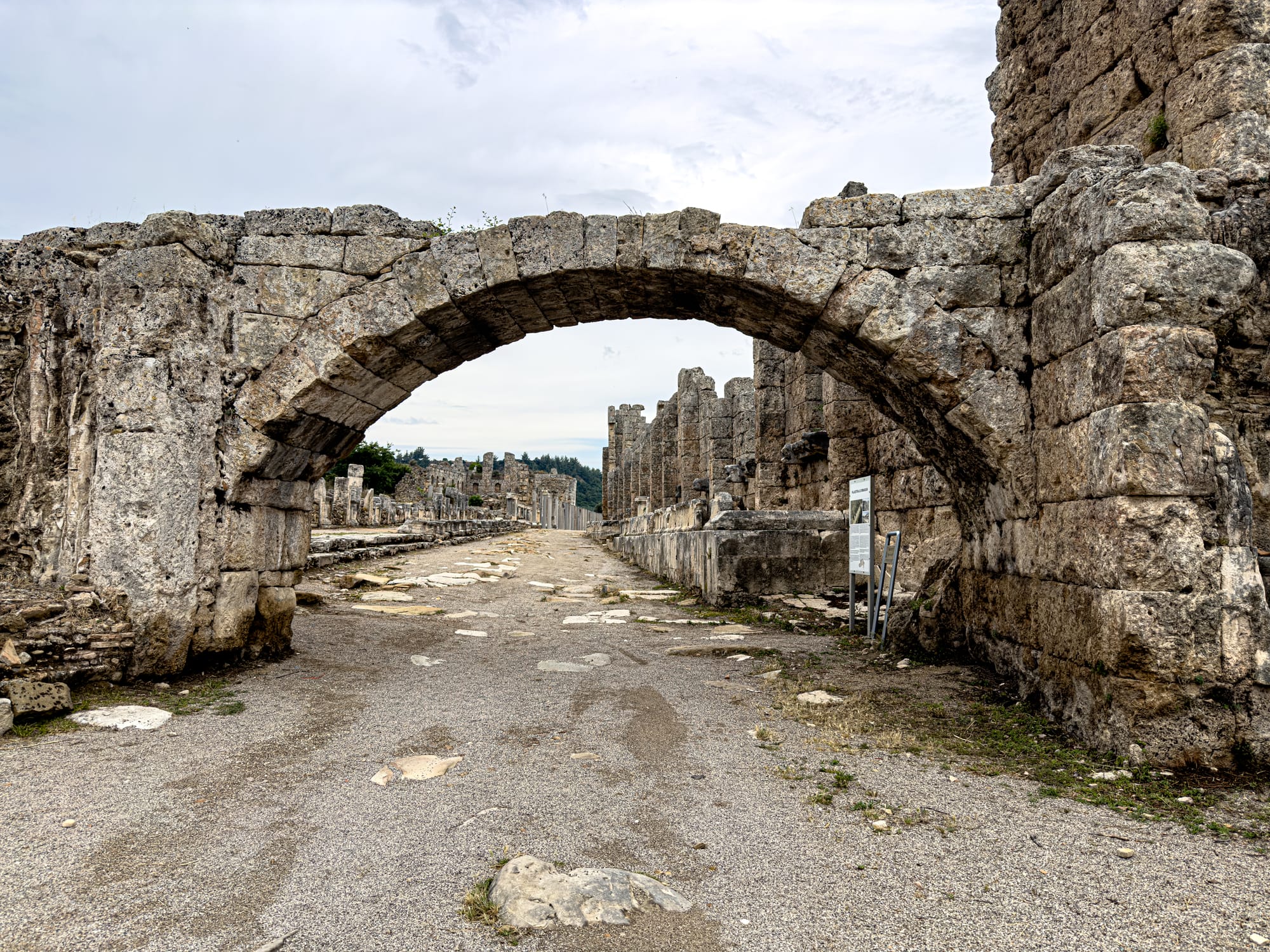
A caper flower blooming near the agora and a stone arch framing the colonnaded main street at Perge
Unlike many other archaeological parks that are more enclosed or manicured, Perge feels natural, expansive, and uninterrupted. You’re free to wander at your own pace through its grid-like layout, and you’ll rarely feel boxed into a set route. For visitors who prefer exploring without an agenda, it’s one of the more relaxing and intuitive sites to move through.
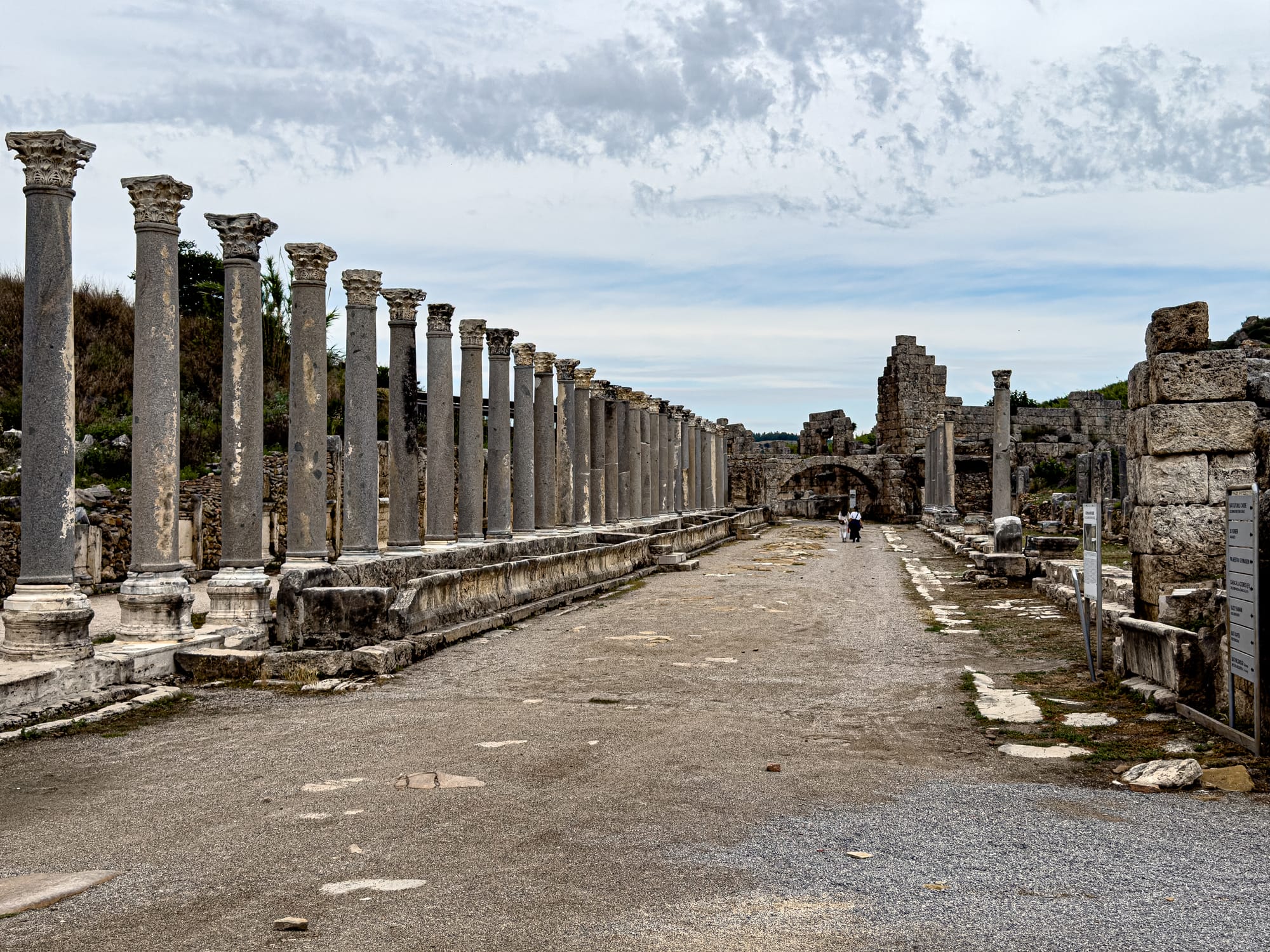
What makes Perge stand out isn't just its scale or completeness—it’s the layered feeling of history built into every part of the site. You’ll walk on pathways grooved by carts and sandals, stand beside fountains that once directed the city’s water supply, and pass under arches that framed the city’s daily life. It’s textured and grounded, with faded columns, low grasses, and wildflowers sprouting freely between fallen stones.
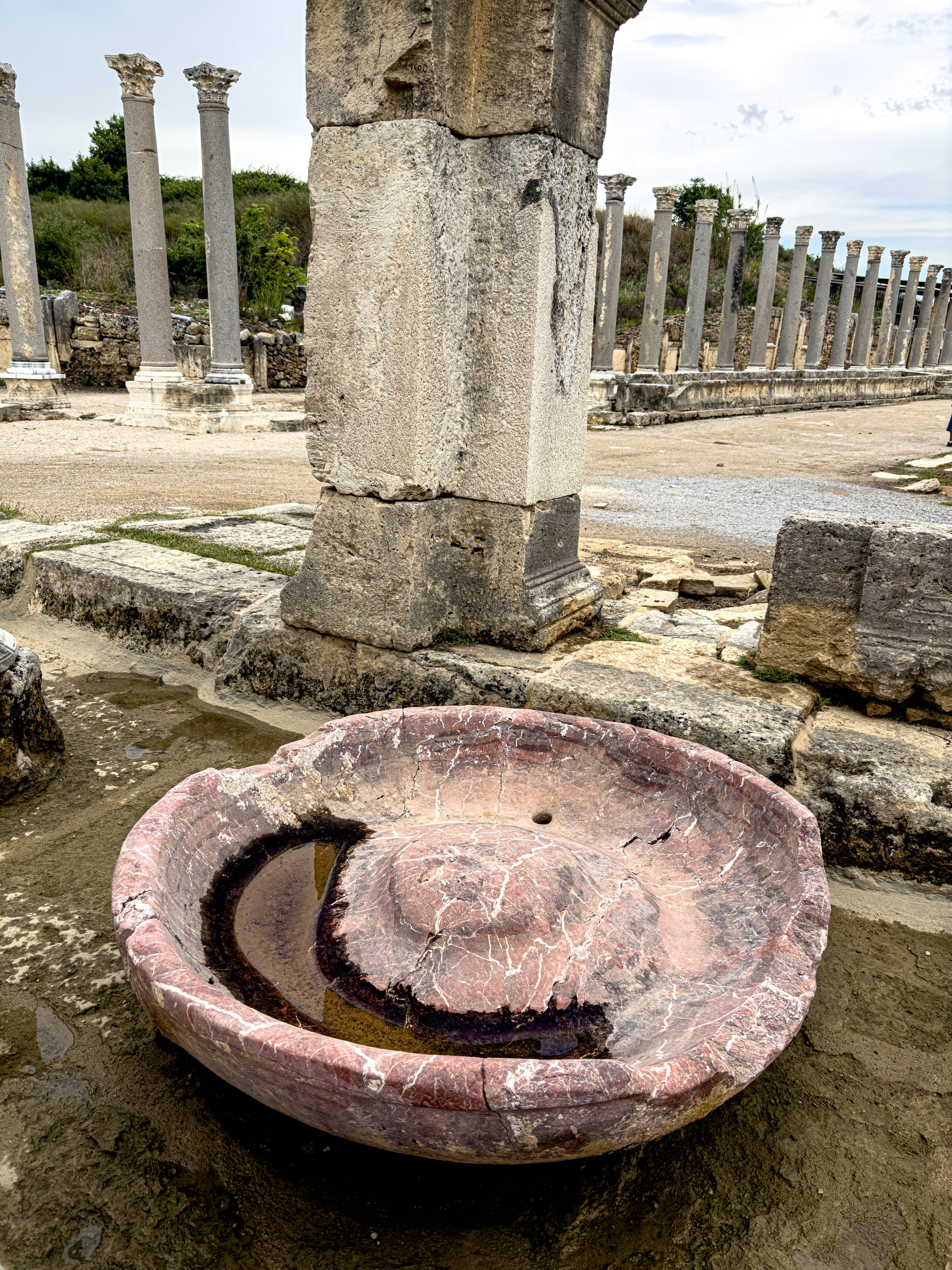
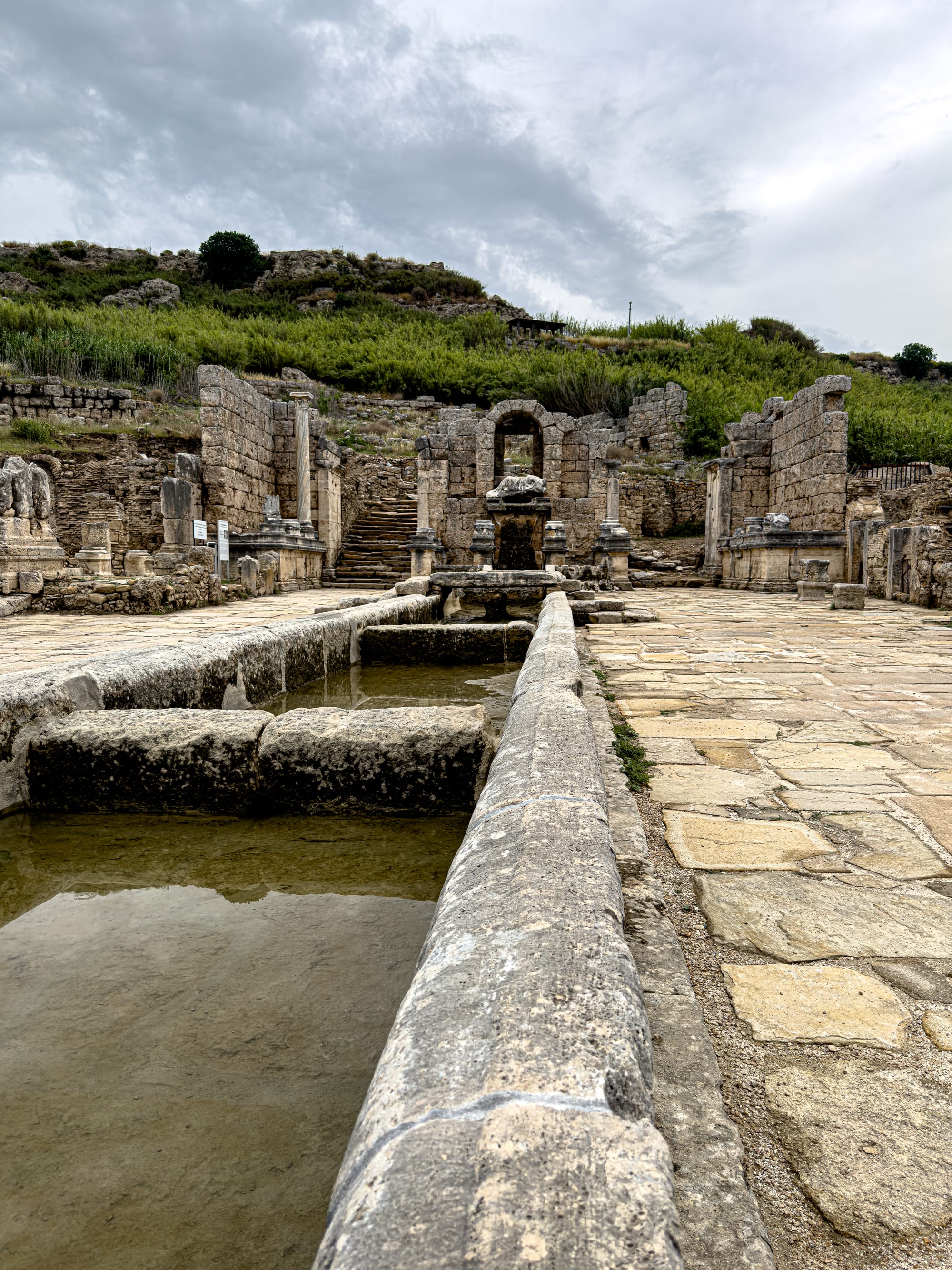
A carved marble basin and the monumental fountain complex at Perge, part of the site’s advanced Roman water system
Because it hasn’t been overly reconstructed, Perge still feels raw in a way that invites reflection. You’re not just seeing the outlines of a once-great city—you’re stepping into its slow decay. Some of the most compelling moments happen away from the major landmarks: a broken inscription partly buried in gravel, a solitary fig tree growing beside a weathered stair, or a set of worn stairs that seem to go nowhere.
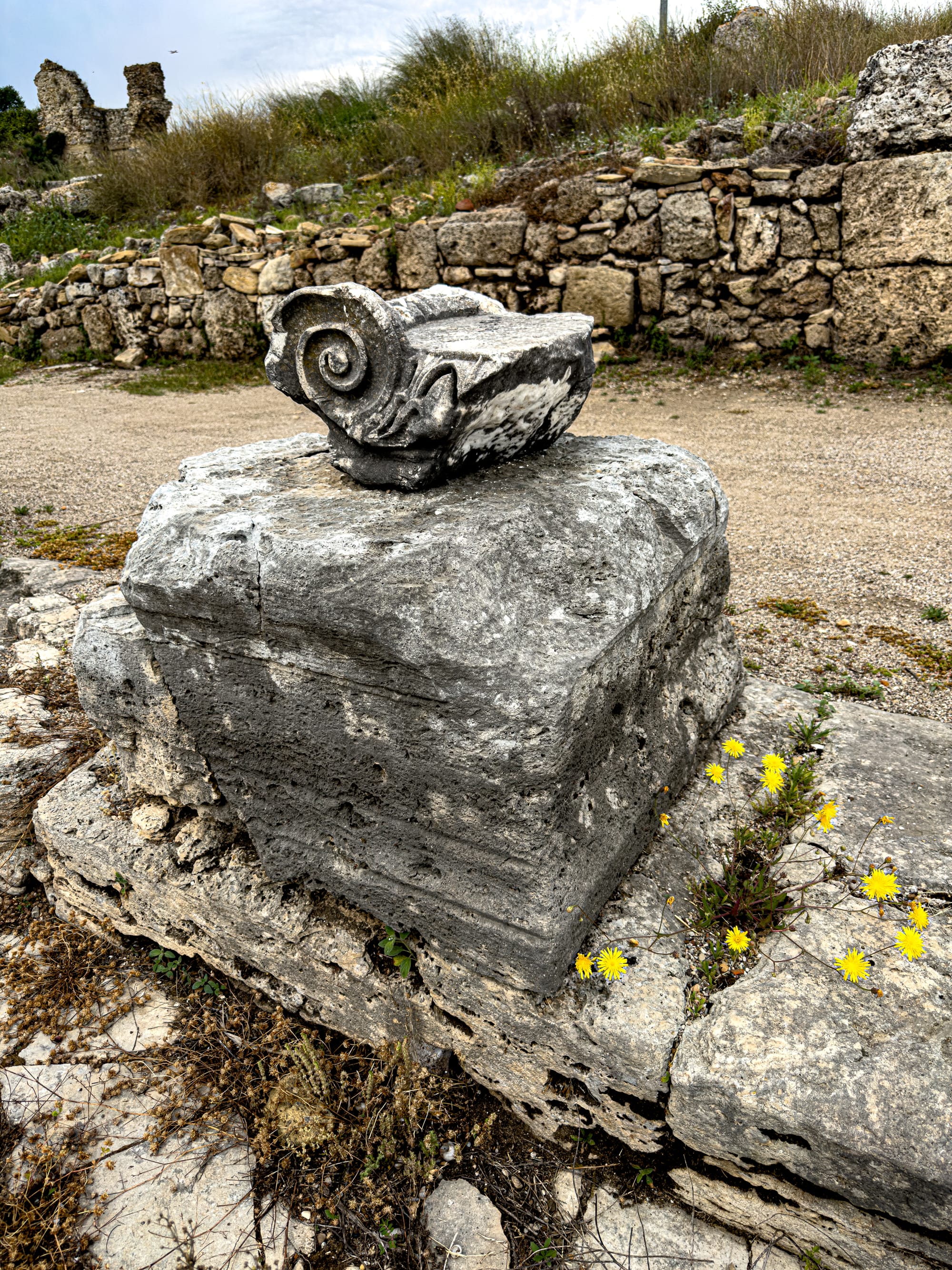
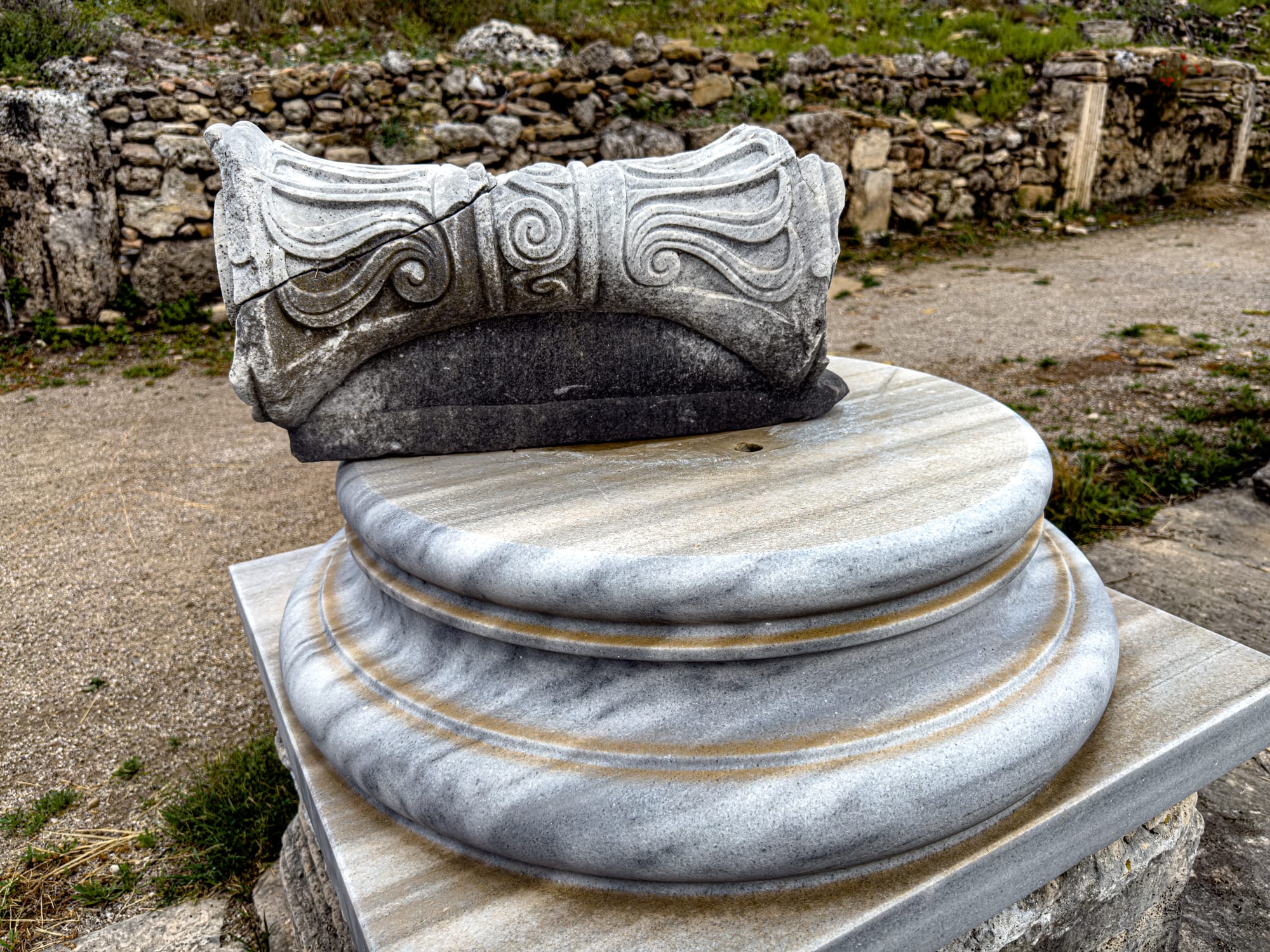
Fragmented column capitals at Perge, showcasing detailed carvings and the soft wear of time
Perge makes for a perfect half-day trip precisely because it doesn’t demand too much. You can spend a few hours here and still have energy left to continue your day—whether that means exploring a nearby site, heading to a beach, or simply returning to Antalya for a long lunch.
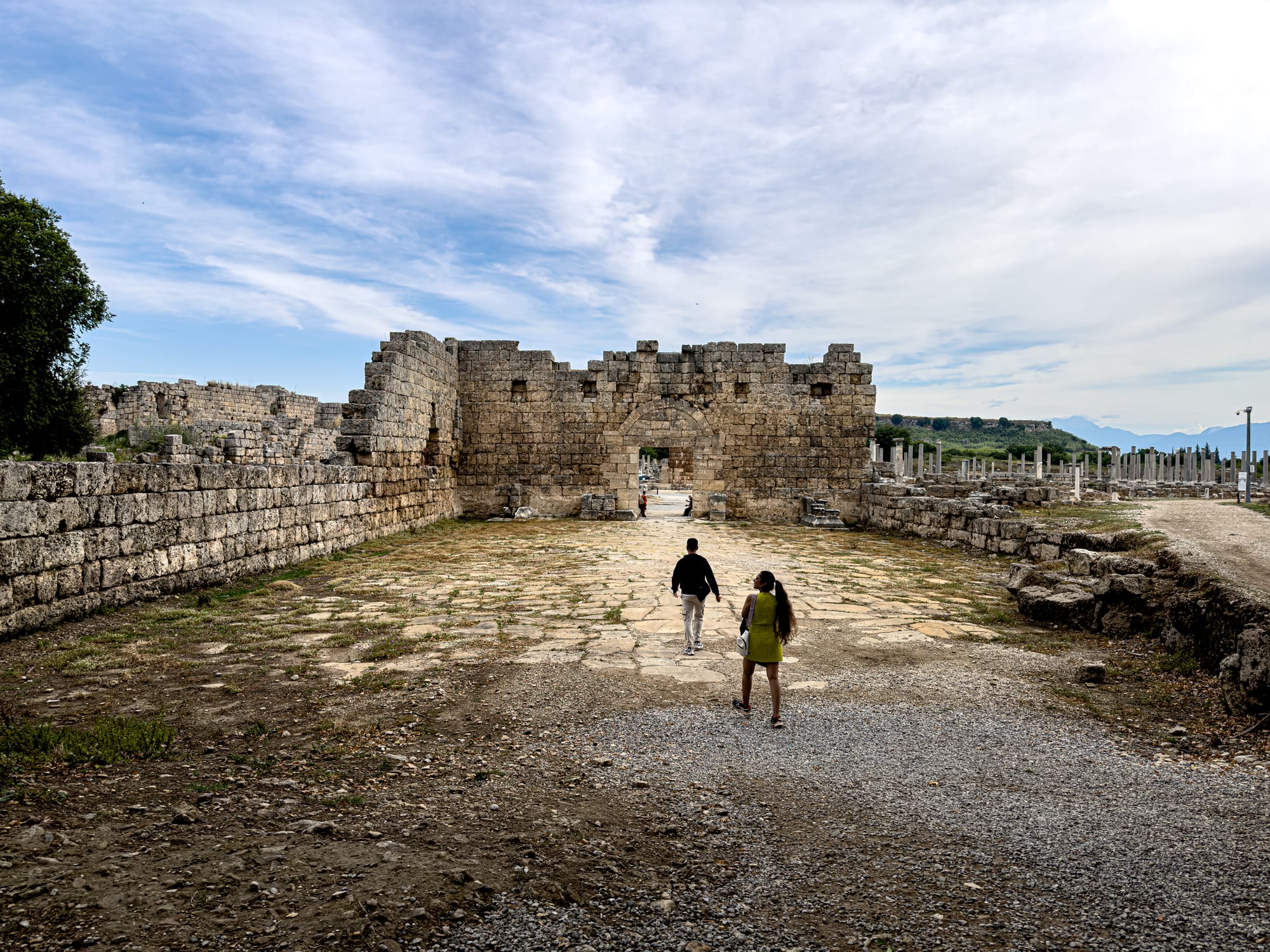
For travelers interested in history, architecture, or photography—or just looking to see something completely different from Antalya’s coastal atmosphere—Perge offers exactly the kind of place that invites unhurried exploration and leaves a lasting impression.
What to see inside Perge
The first thing you see is the Hellenistic Gate. It's tall and symmetrical, and you pass under it to start exploring the rest of the site. From there, a wide, straight street opens up between rows of tall columns, with remnants of the old water channel still running along the center.
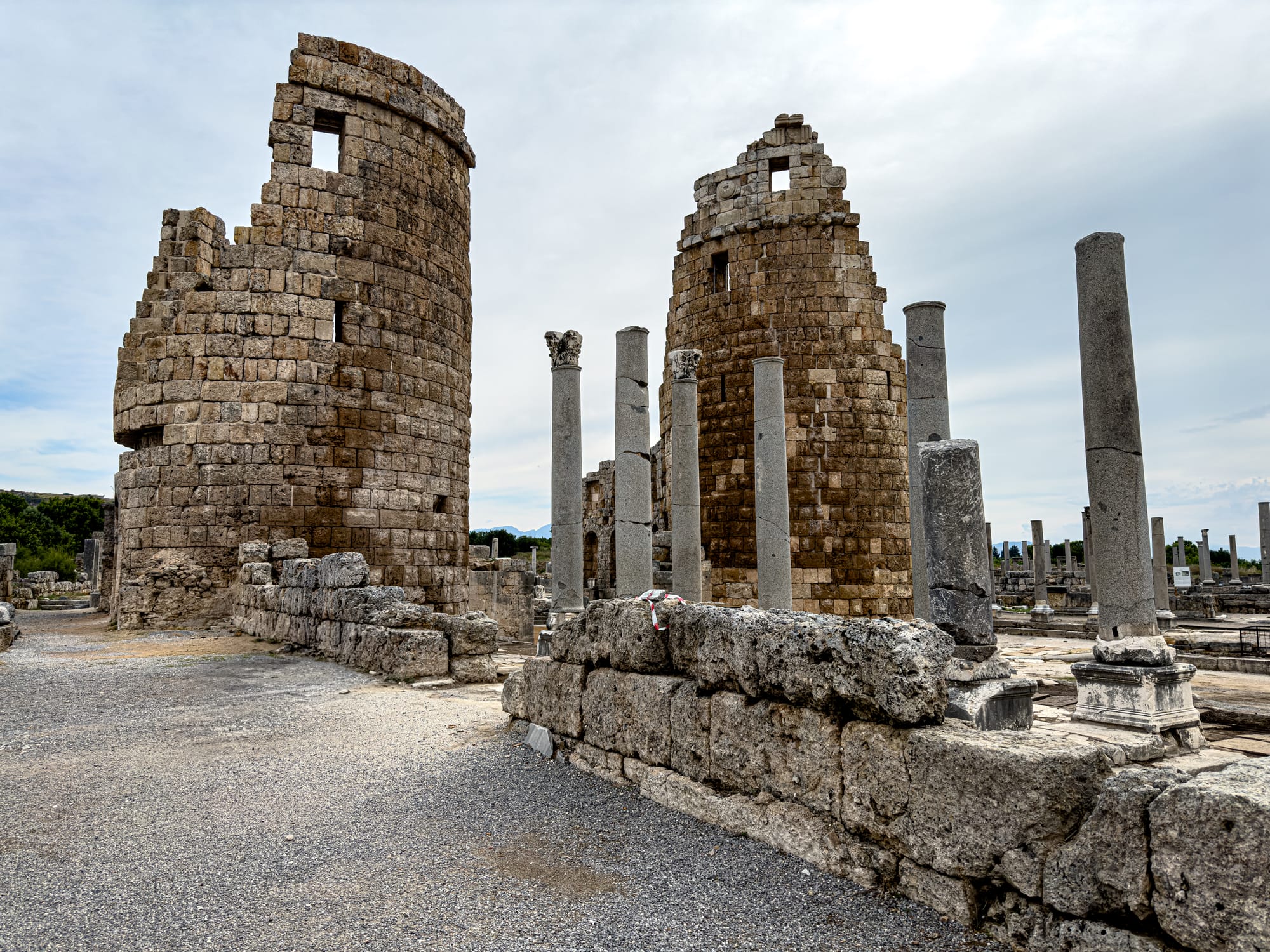
One of the standout features of Perge is its Roman baths. You can walk through the different sections—the frigidarium, tepidarium, and caldarium—and really get a sense of the scale and layout.
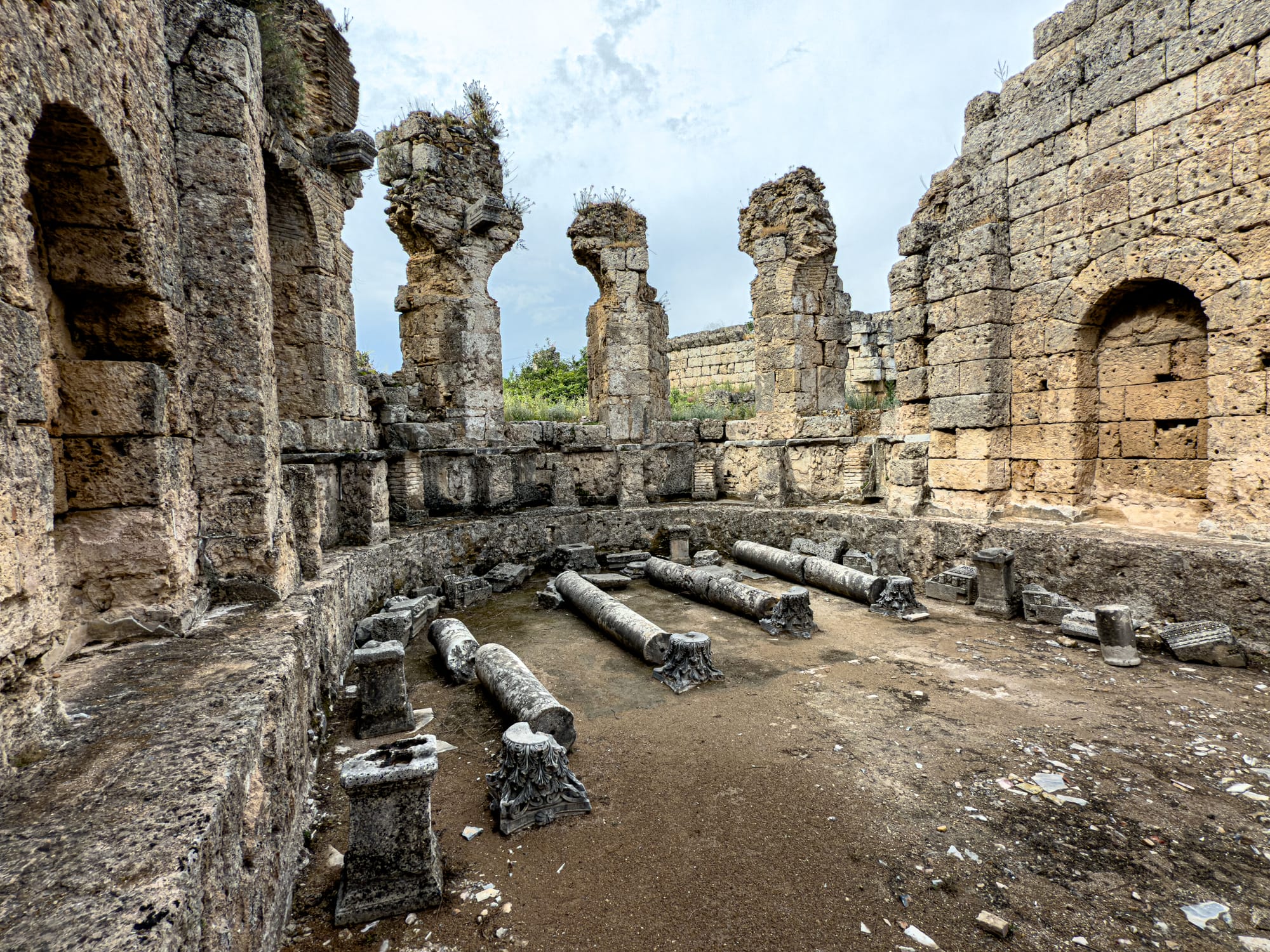
Nearby is a monumental fountain, the nymphaeum, which once supplied water throughout the city. Its scale and detail still impress, even in its current weathered form.
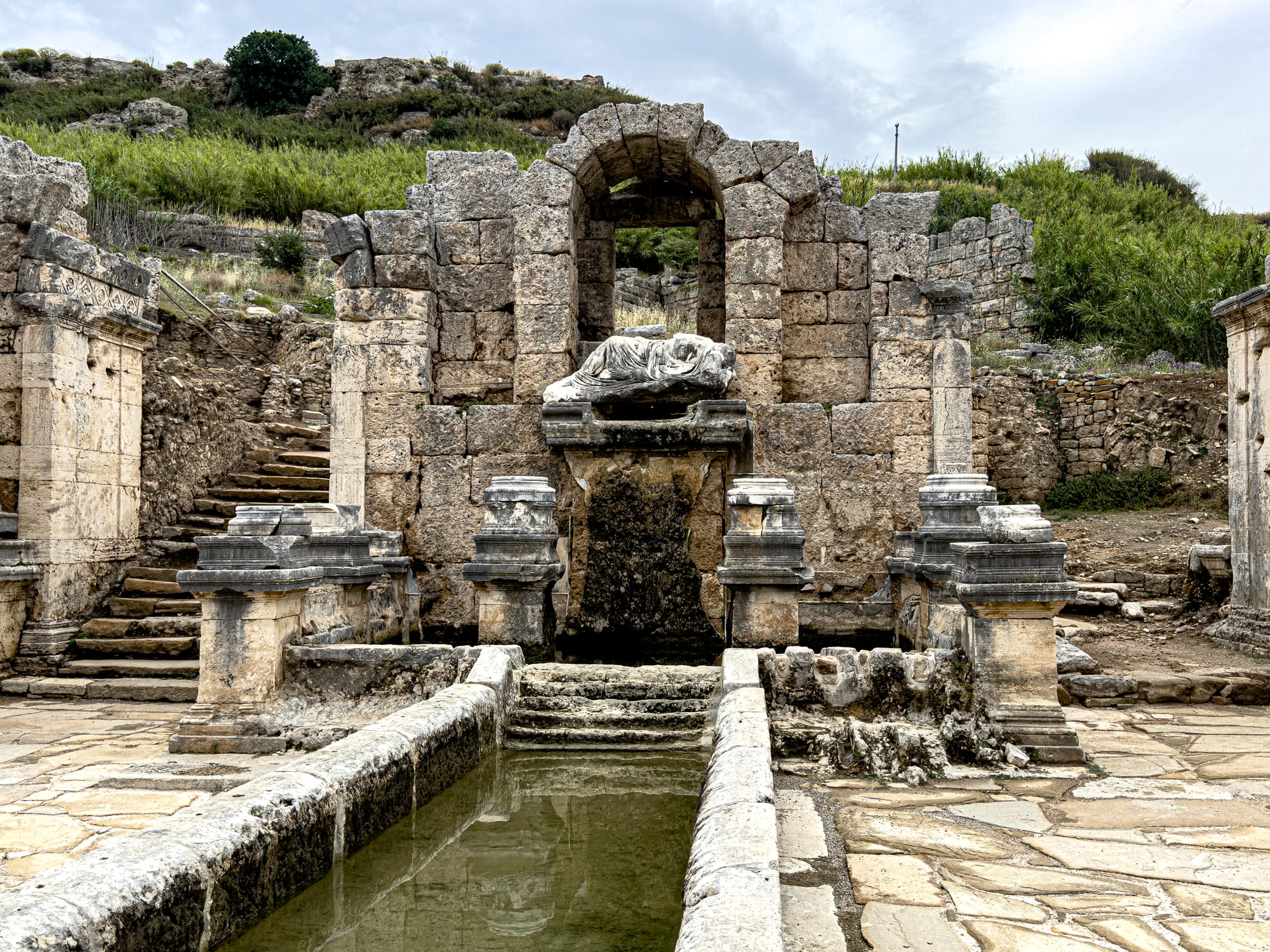
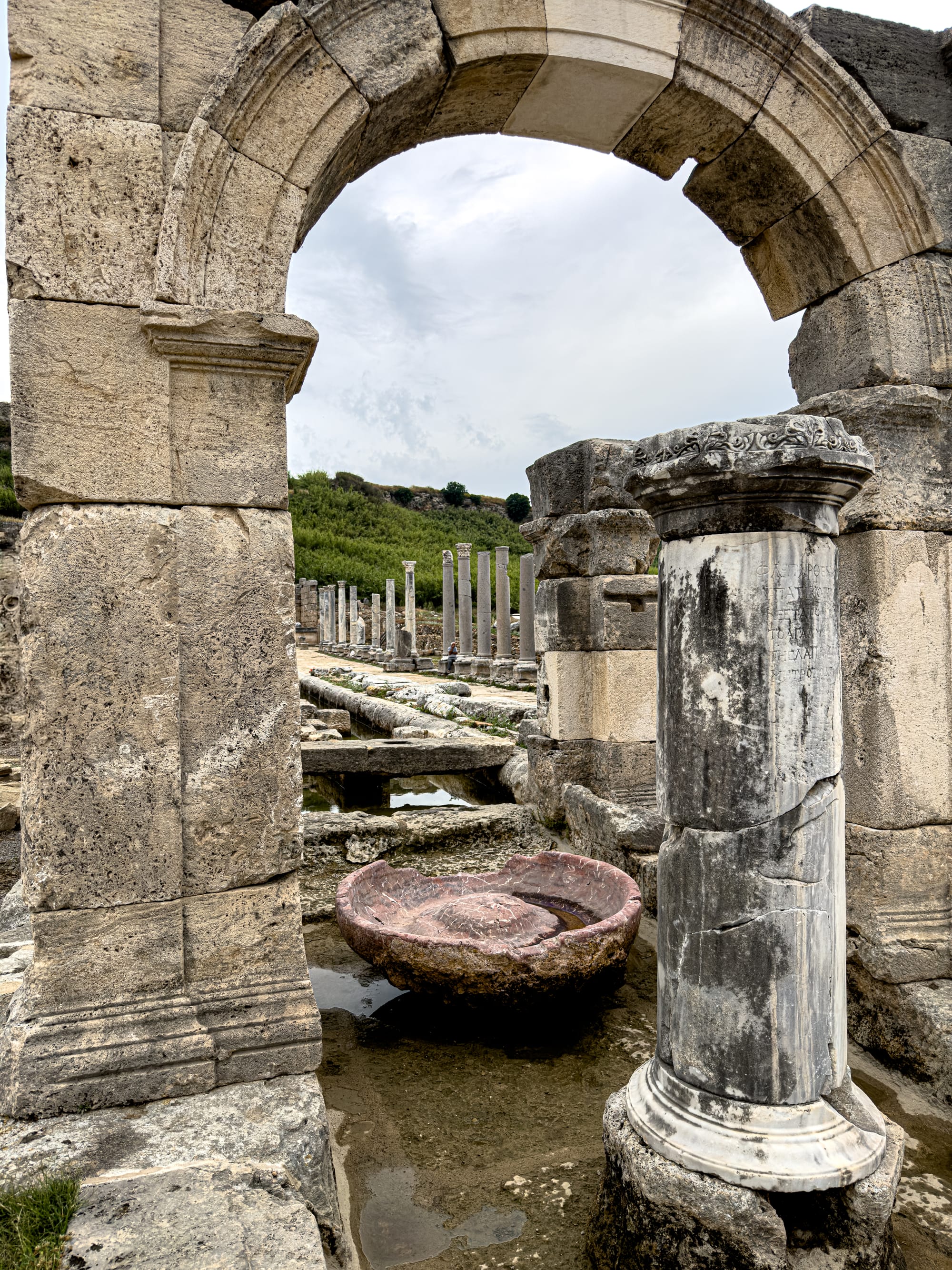
The monumental fountain at Perge, once fed by an aqueduct
The agora, or marketplace, is a square-shaped complex with the outlines of shop stalls and administrative buildings still visible. You can easily imagine this space filled with everyday activity: merchants, buyers, public announcements. In the background, there's often the distant sound of birdsong or wind, adding to the sense of stillness that defines the whole site.
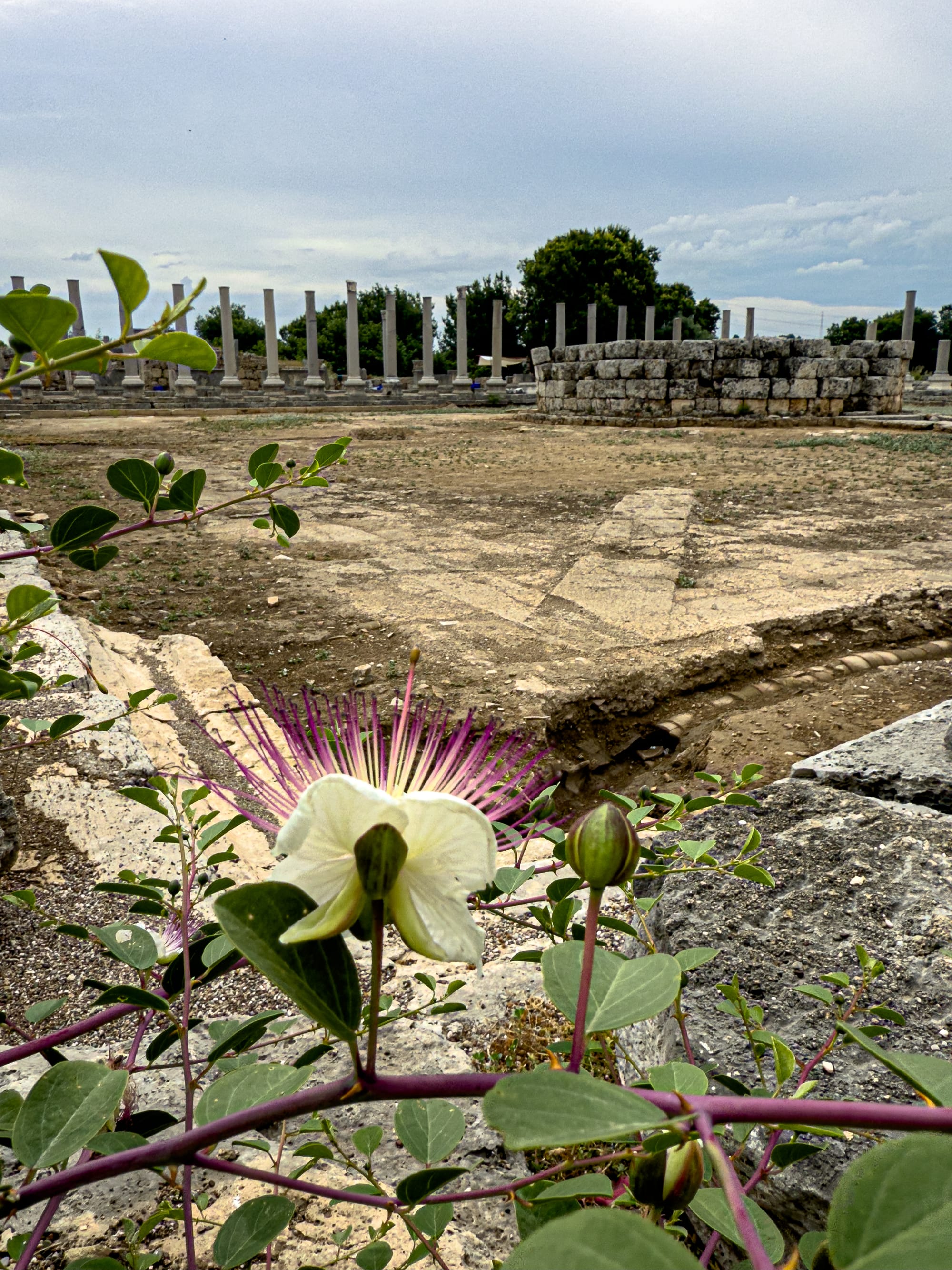
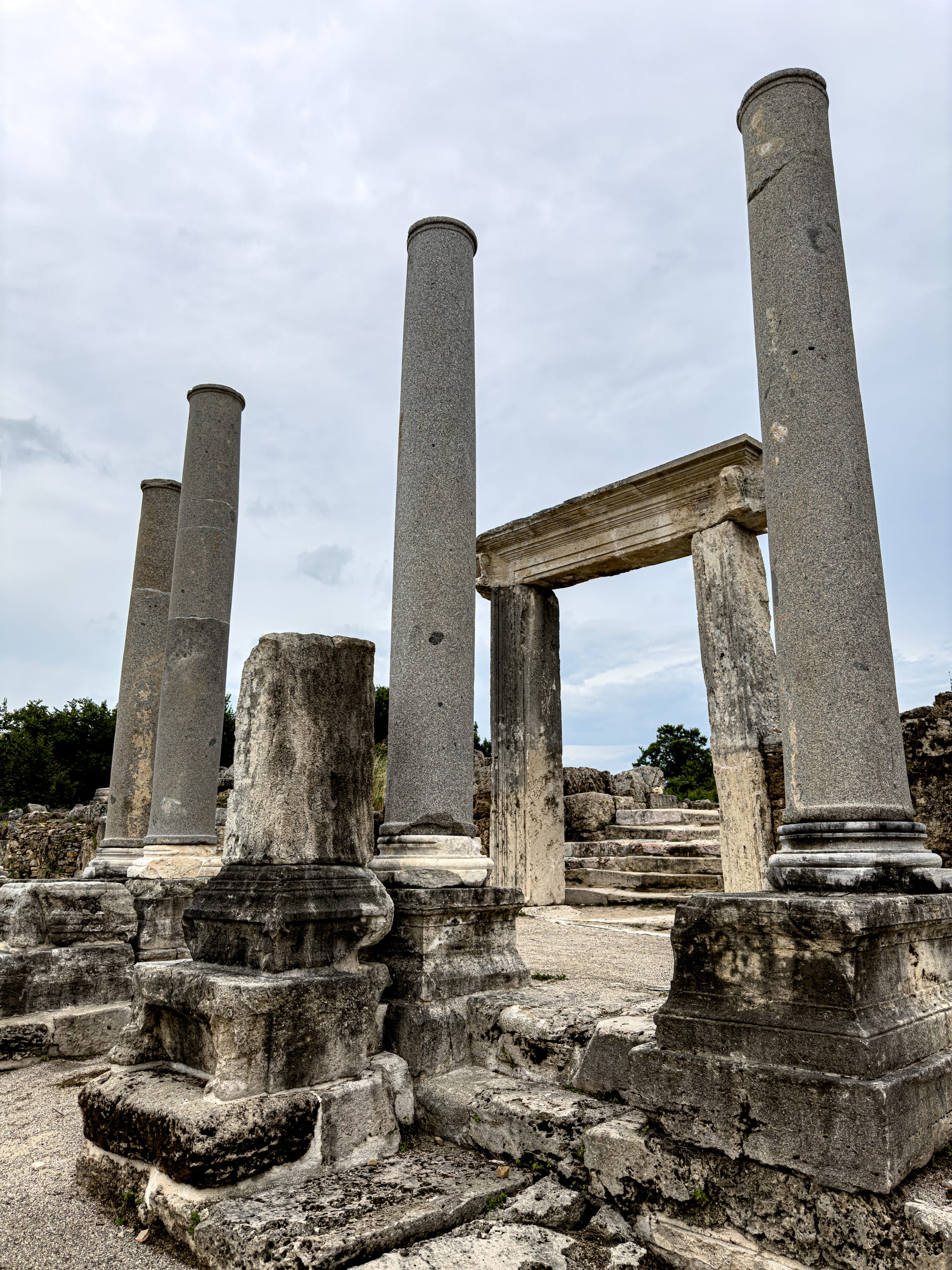
Restored columns and lintels hint at the site’s former architectural symmetry
Continue walking down the colonnaded street and you’ll eventually reach the stadium. It's unusually long and narrow, and although parts are collapsed, the seating rows are mostly intact.
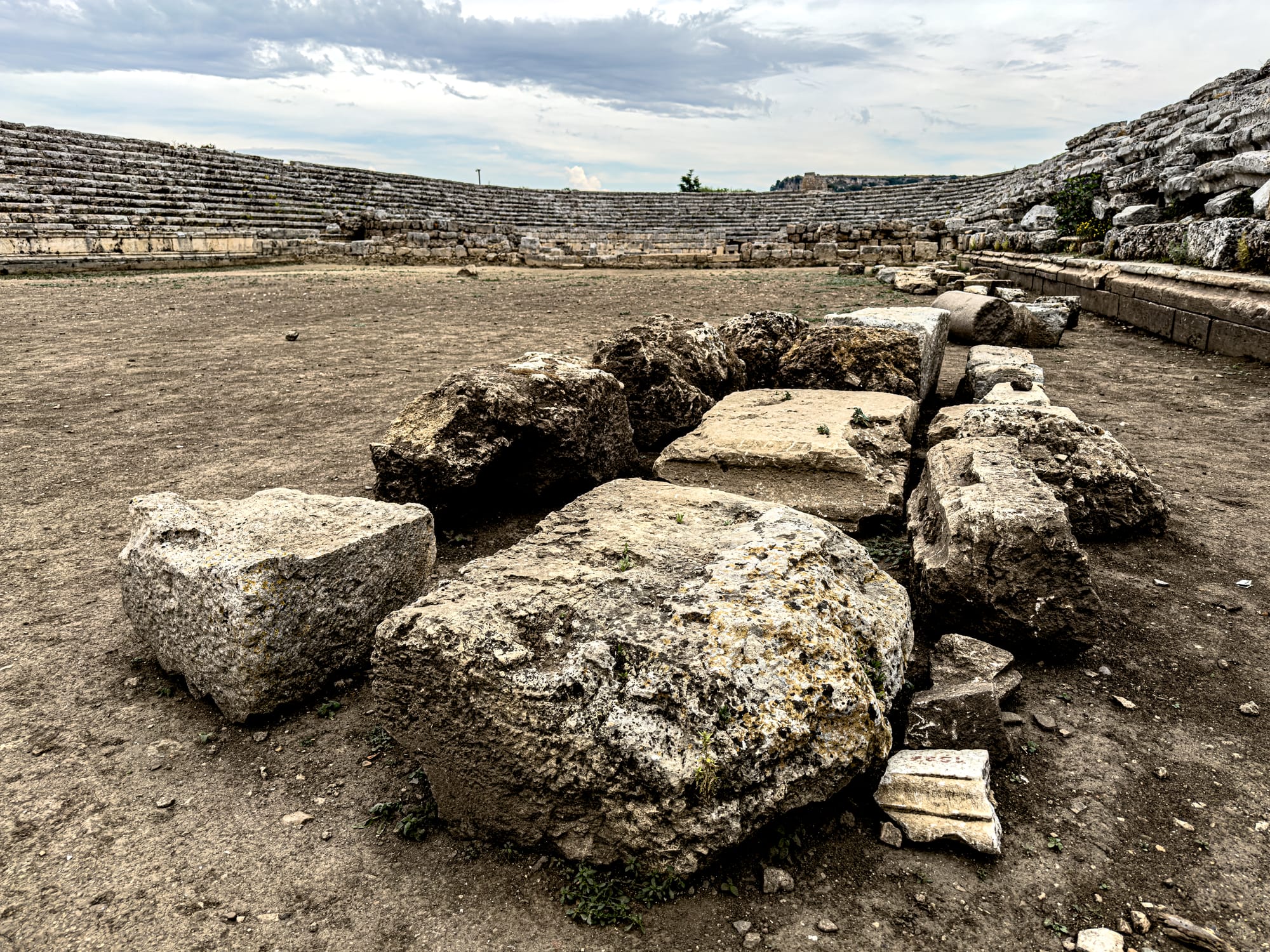
This is one of the better-preserved Roman stadiums you can visit in Turkey. From certain angles, the structure looks almost surreal—arches framing open sky, with bits of plant life growing out of the stone. It’s a good place to sit for a few minutes and take everything in.
Small details and quiet moments
While the large-scale structures of Perge draw most of the attention, some of its most compelling features are in the smaller fragments scattered throughout the site.
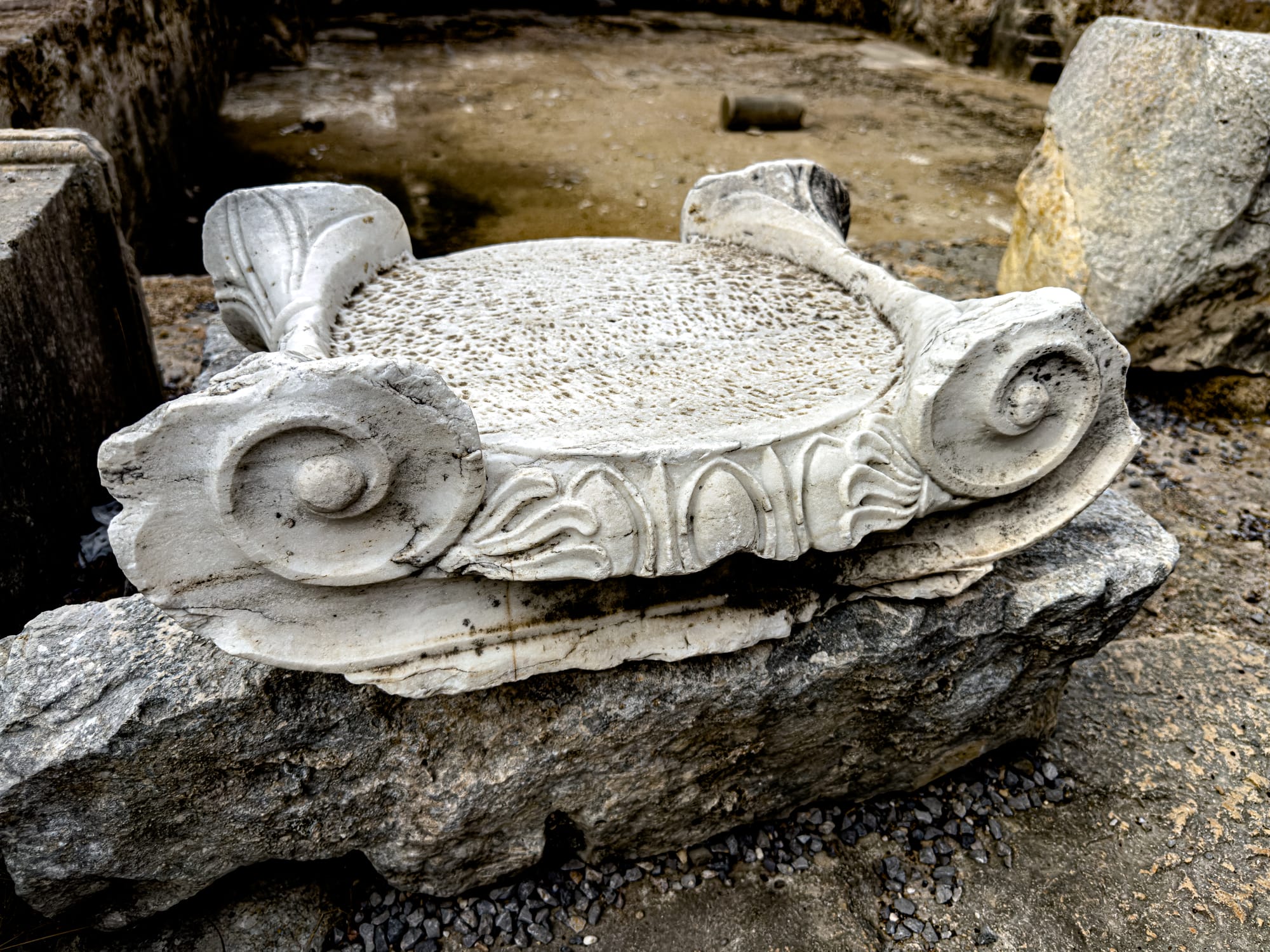
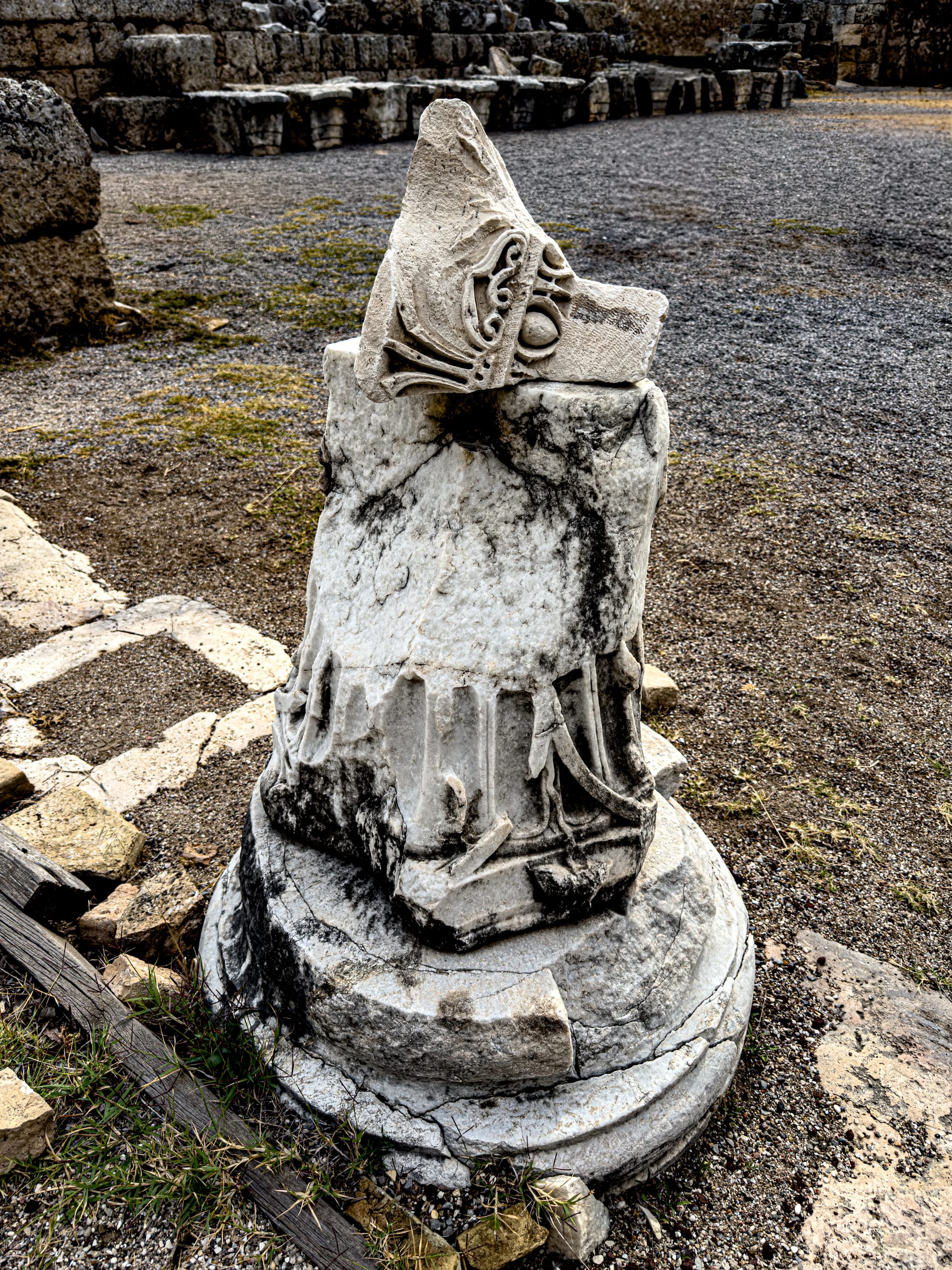
Fragments from Perge’s sculptural past
Stone carvings, column bases, and fractured inscriptions are often half-buried or resting against fallen walls, their worn edges and asymmetrical lines inviting close study. These are the parts of the site where you might find yourself lingering longer than expected.
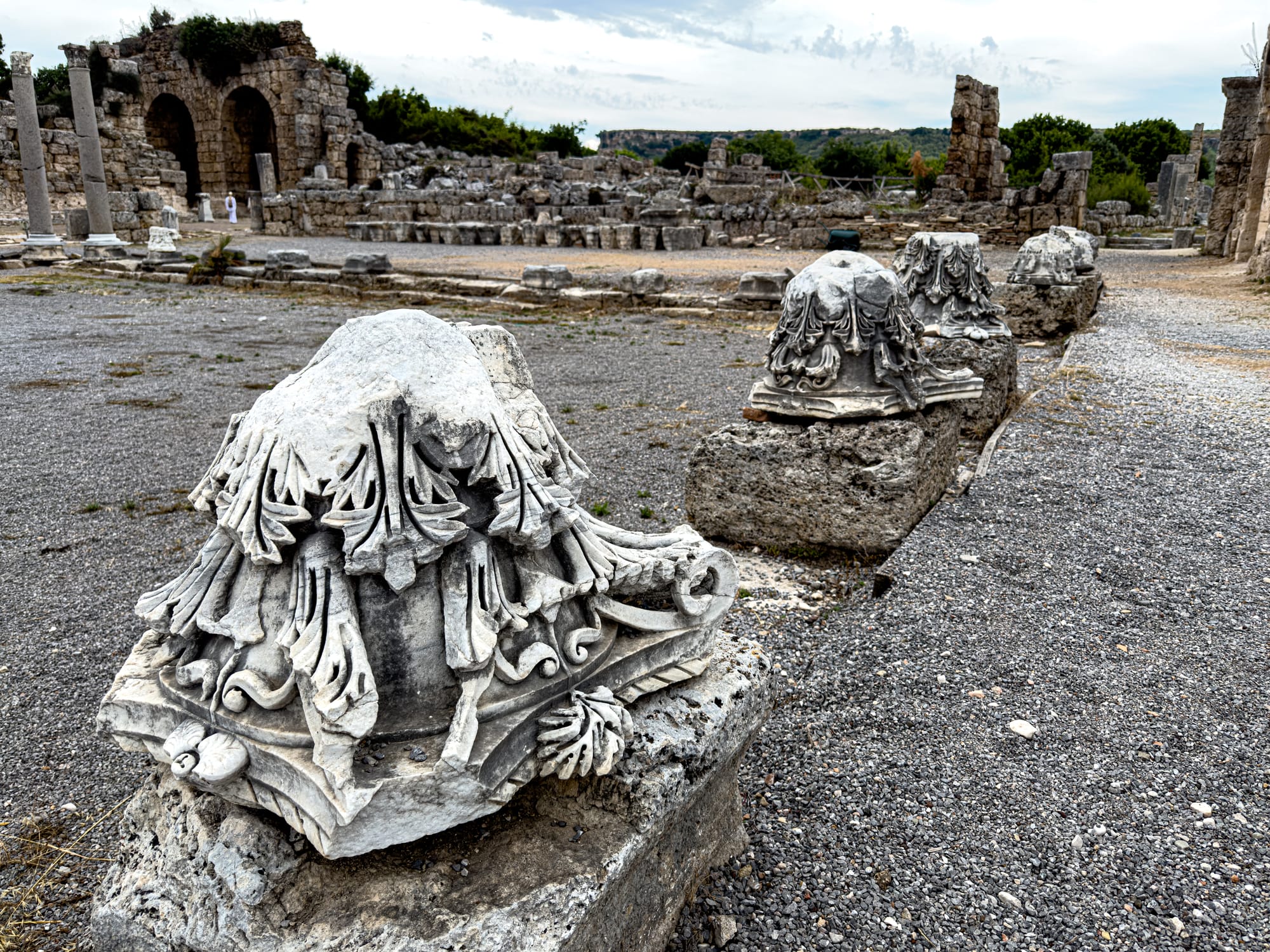
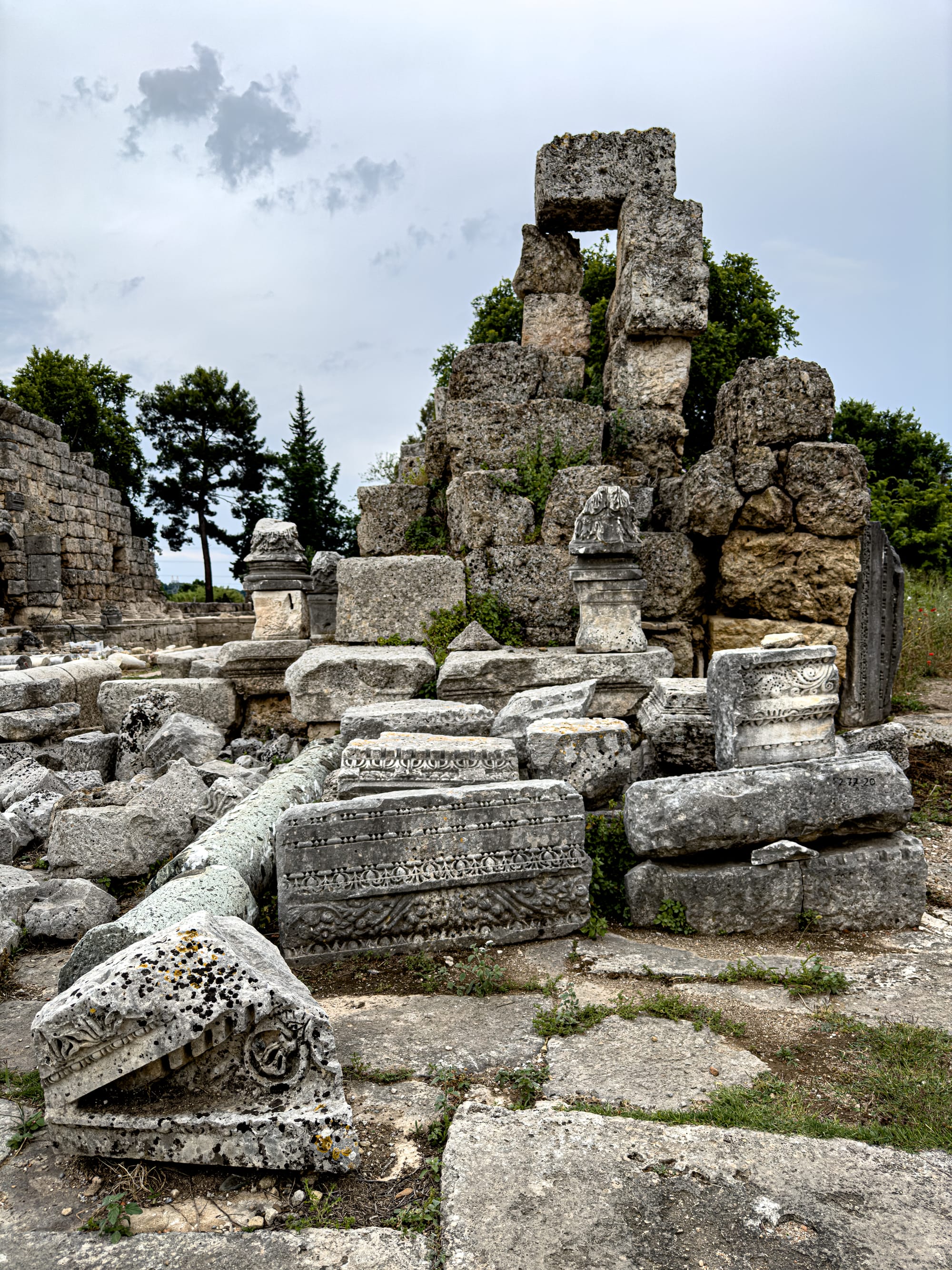
Decorative marble fragments and overgrown masonry at Perge, where scattered stone tells of the city’s layered collapse
There’s a kind of creative quiet that settles in these corners. The combination of texture, repetition, and the erosion of time gives rise to shapes and forms that feel almost abstract.
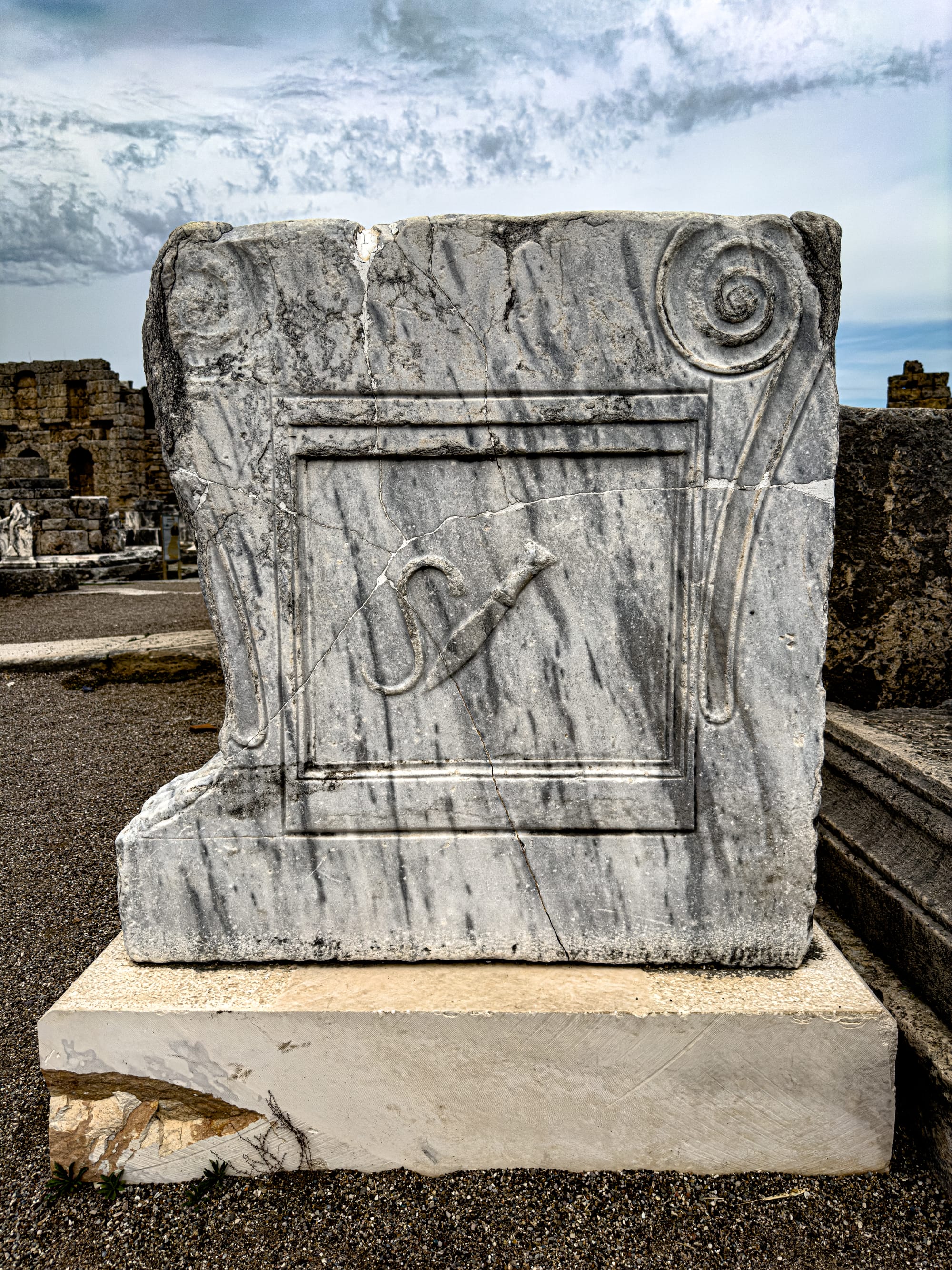
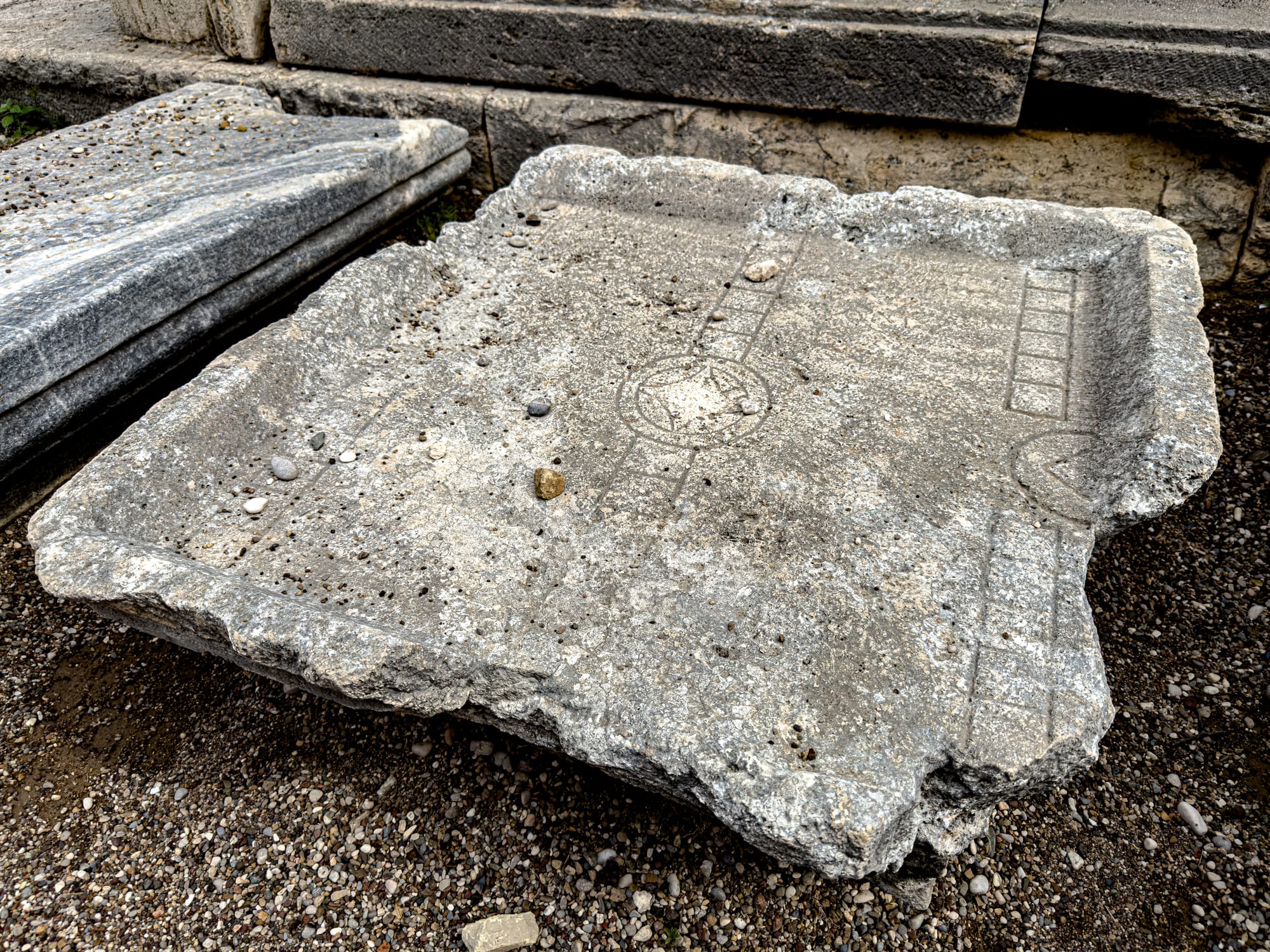
A carved marble panel and a fragmentary game board etched into stone
Many visitors find inspiration in these less dramatic elements—patterns that invite sketching, the broken curve of a carved relief, or the rhythm of stone blocks stacked imperfectly along a slope.
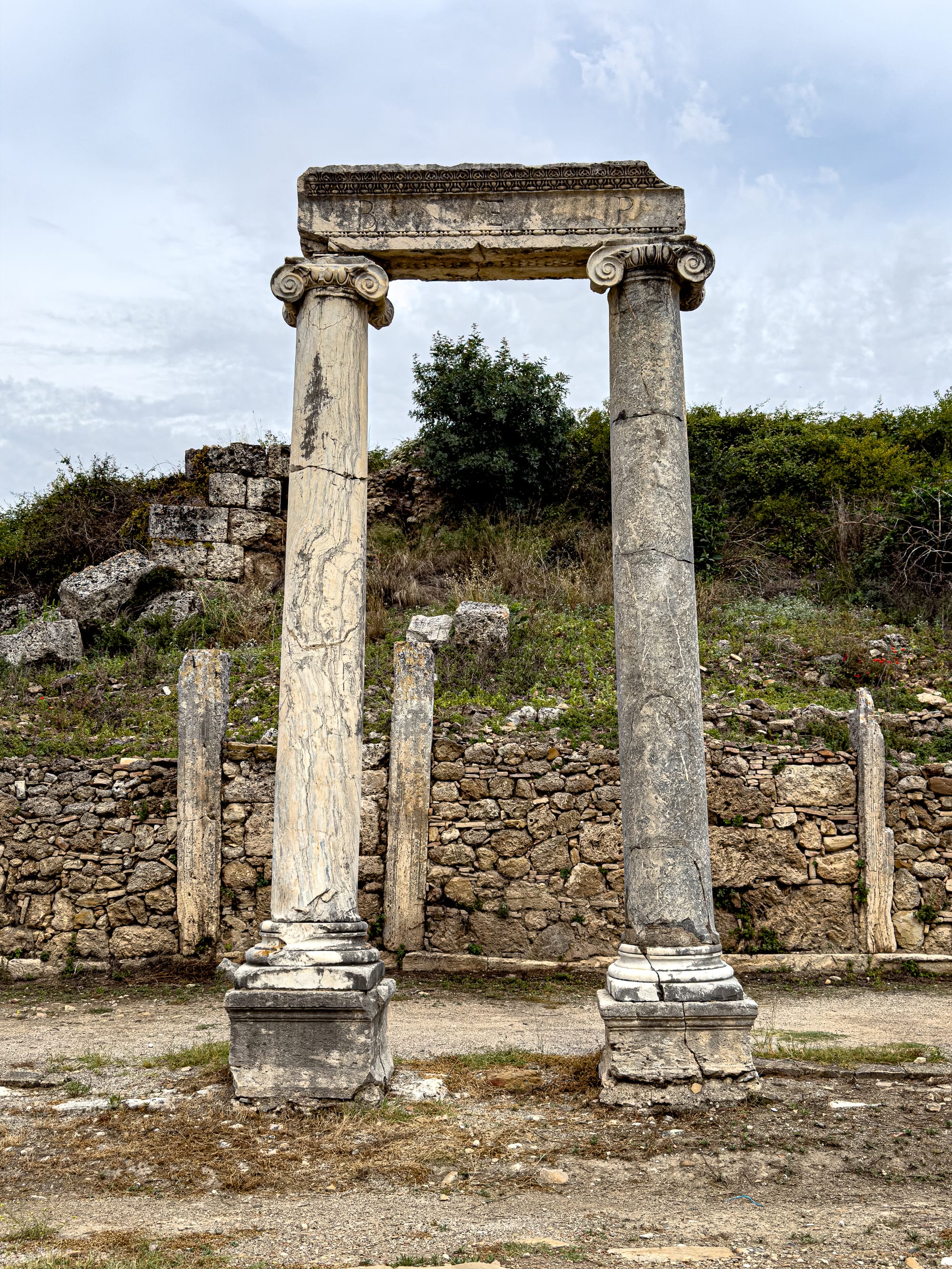
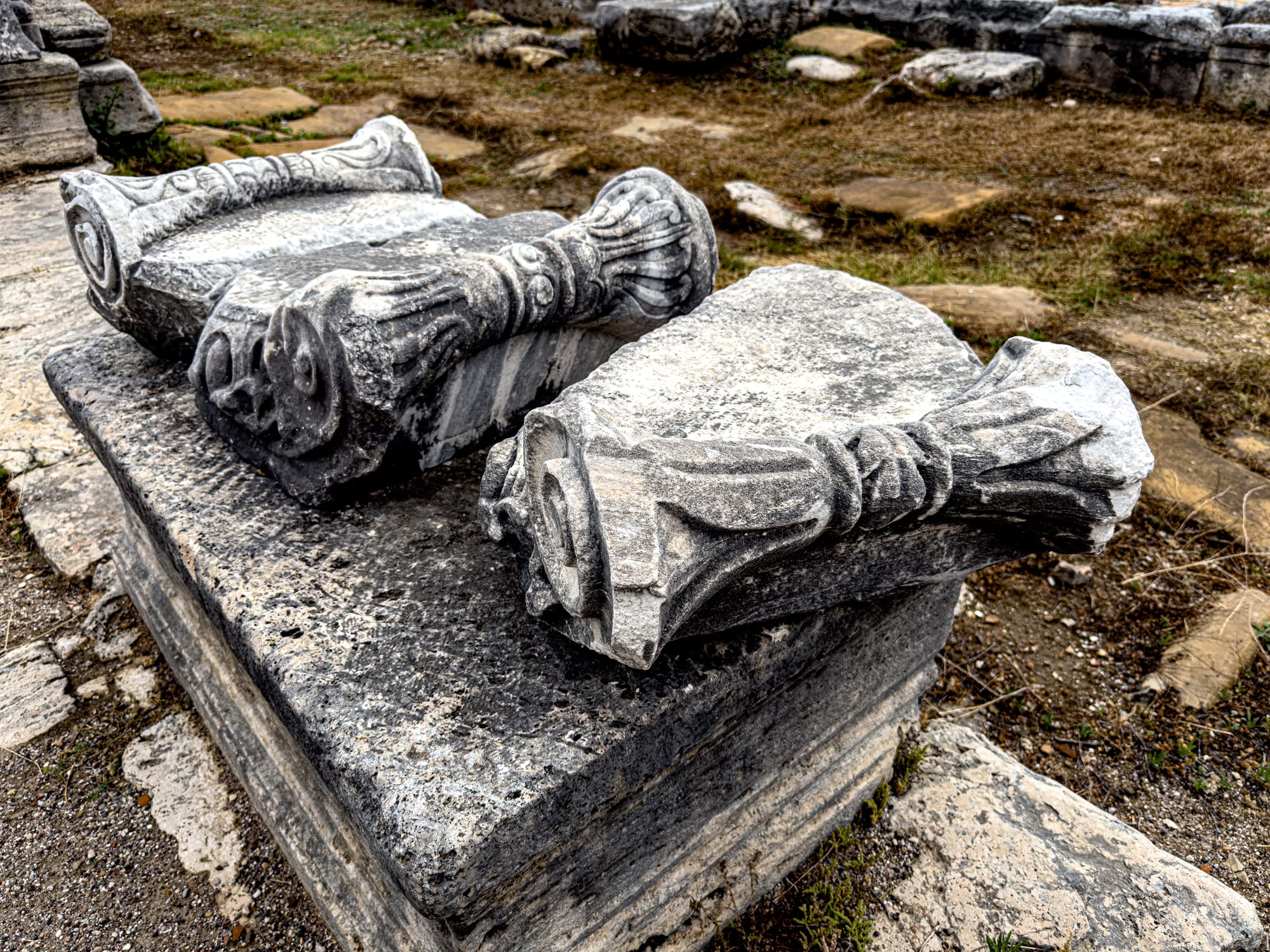
Standing columns and carved fragments from Perge’s Roman architecture
Perge offers plenty of space to sit on a ledge or low wall and take it all in slowly, especially near the quieter rear edges of the site where the foot traffic thins.
The flora around the ruins
Beyond the stone structures and city plan, one of the subtle pleasures of visiting Perge is noticing the wild flora that grows throughout the site. Especially in spring and early summer, flowering cactus and Mediterranean scrub plants bring color and softness to the landscape. Prickly pear cactus (Opuntia), with its flat green pads and vivid blooms in pink and orange, stands out most clearly—often appearing along the walkways and beside collapsed columns.
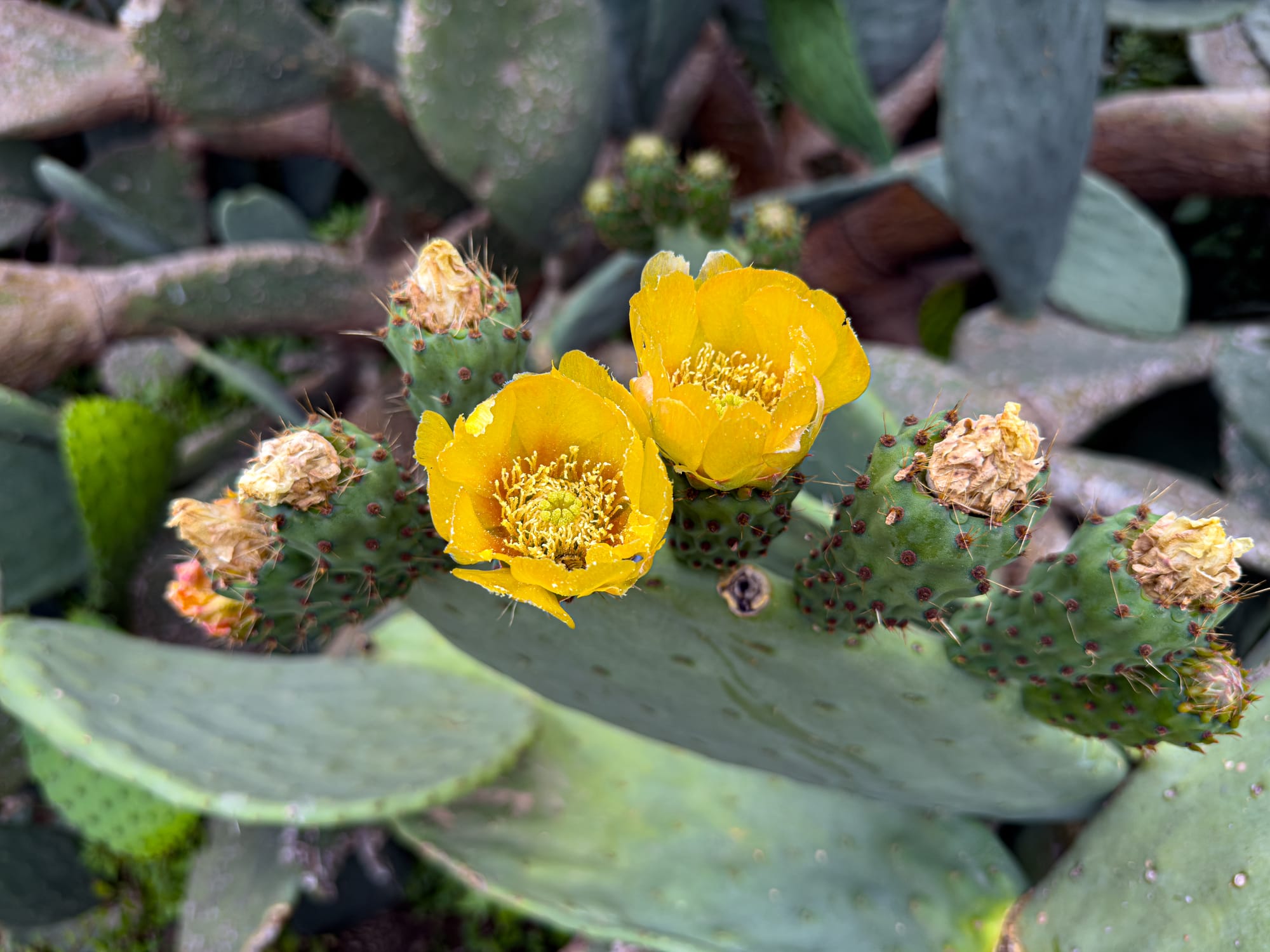
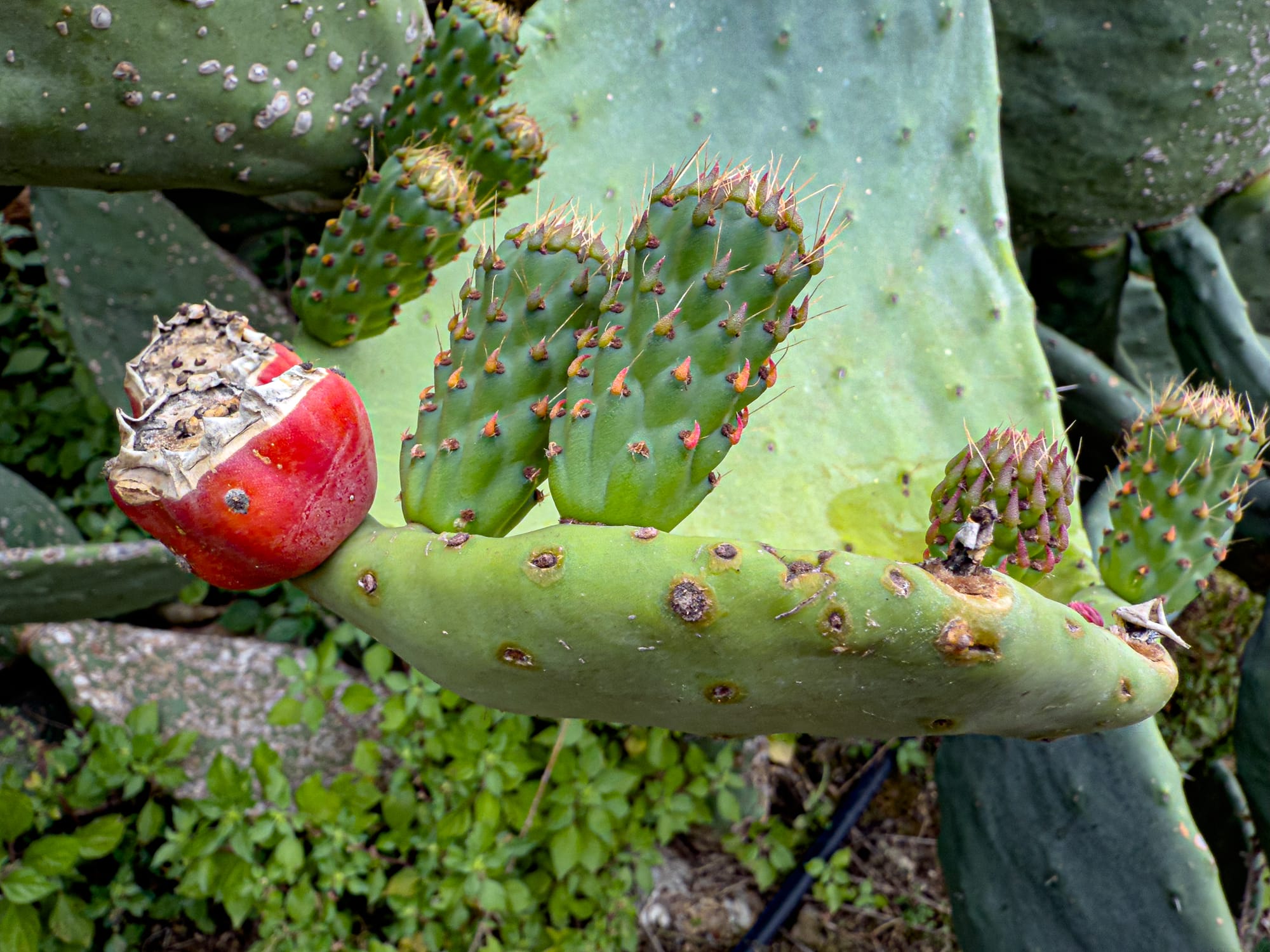
Prickly pear cactus in bloom and fruiting at Perge, a hardy species found throughout the site’s sunny ruins
Other distinctive flowers include papery orange-red poppies, likely Papaver rhoeas, which thrive in disturbed ground and pop up vividly around stone walls and old foundations.
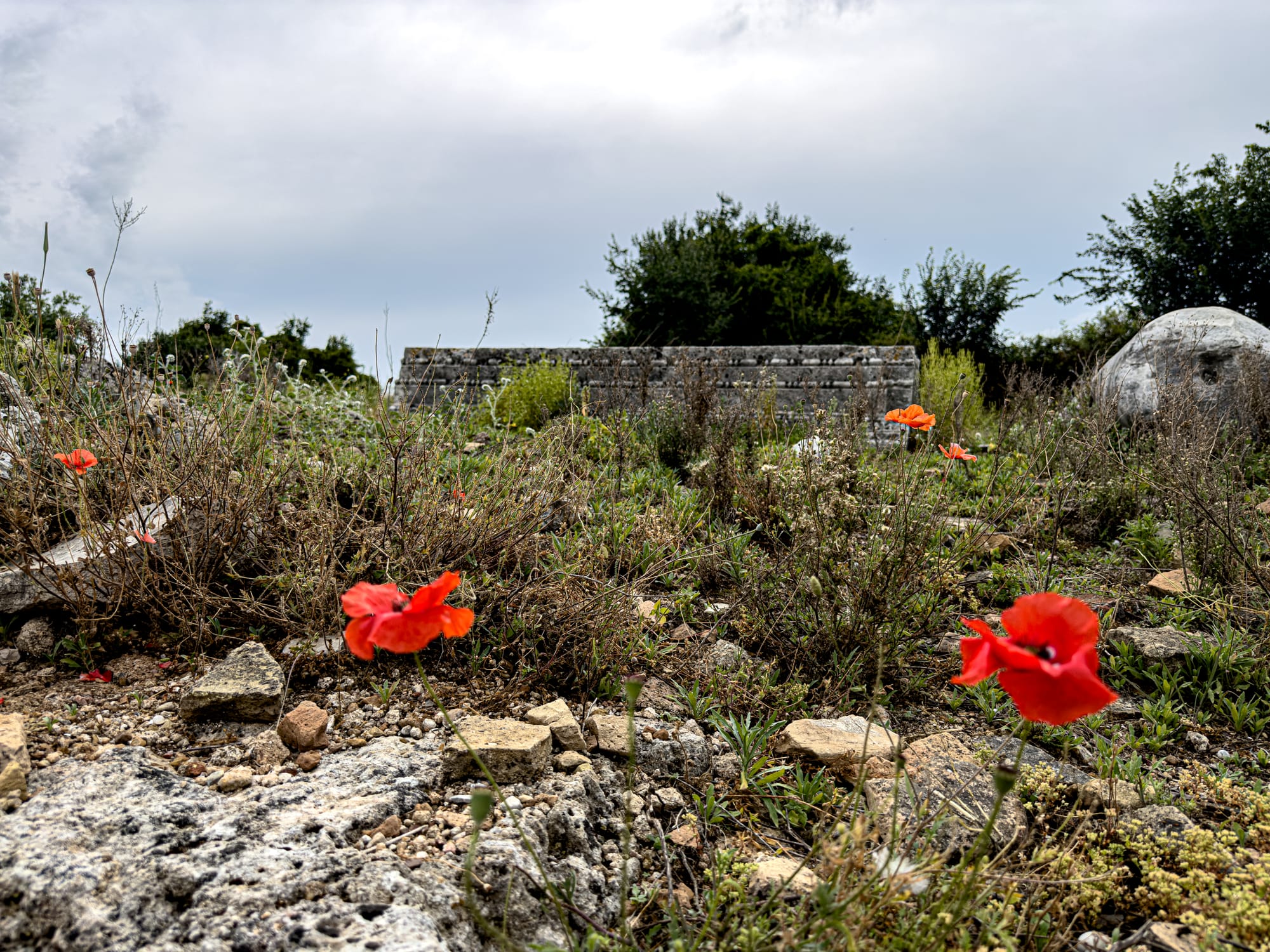
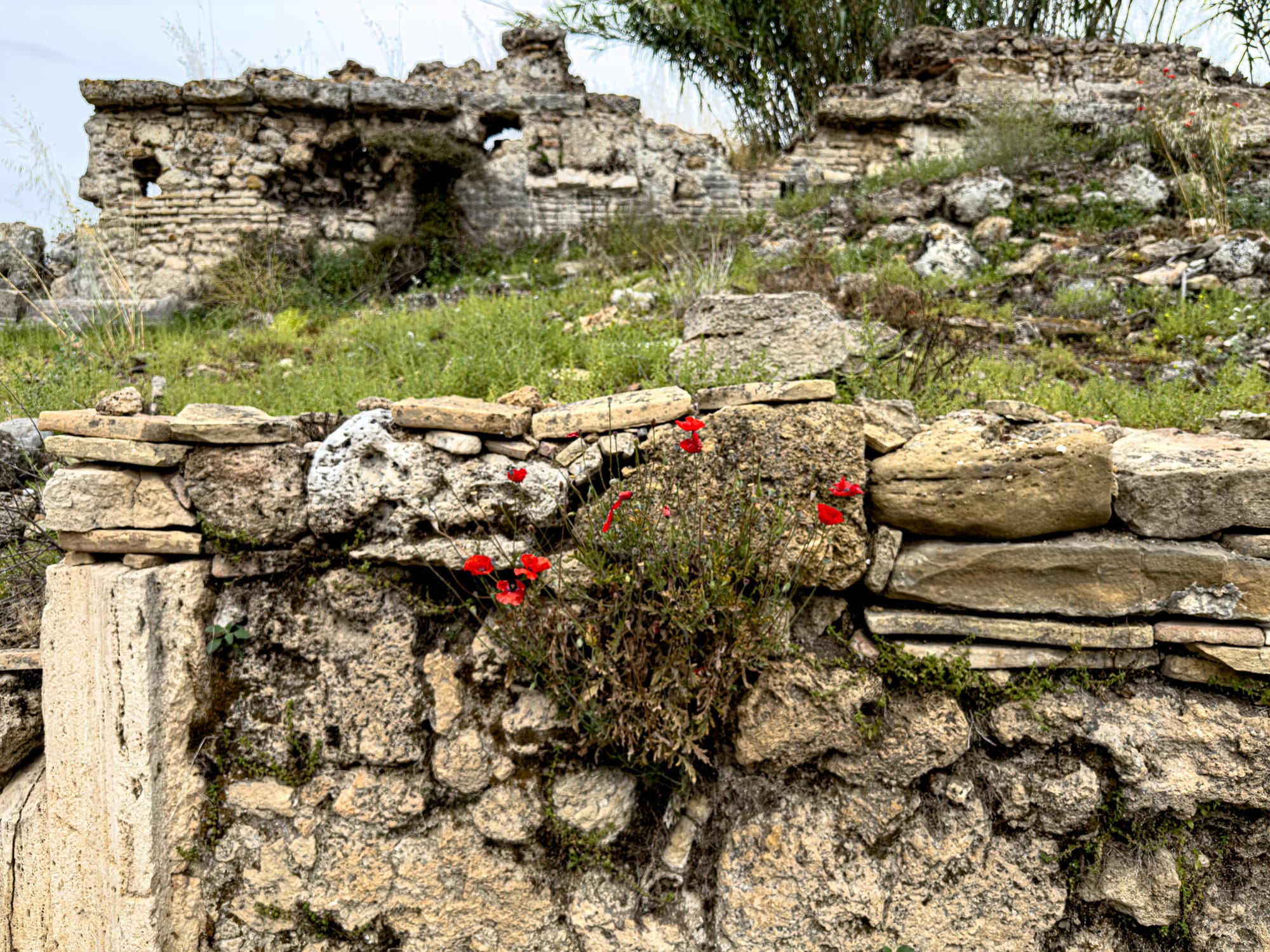
Wild red poppies growing among the ruins at Perge, adding bursts of color to the ancient stonework
Delicate white and yellow blossoms spiraling along tall stalks resemble species of Heliotropium—often called turnsole—commonly found across southern Turkey’s dry grasslands. Their clustered blooms are particularly noticeable around the agora.
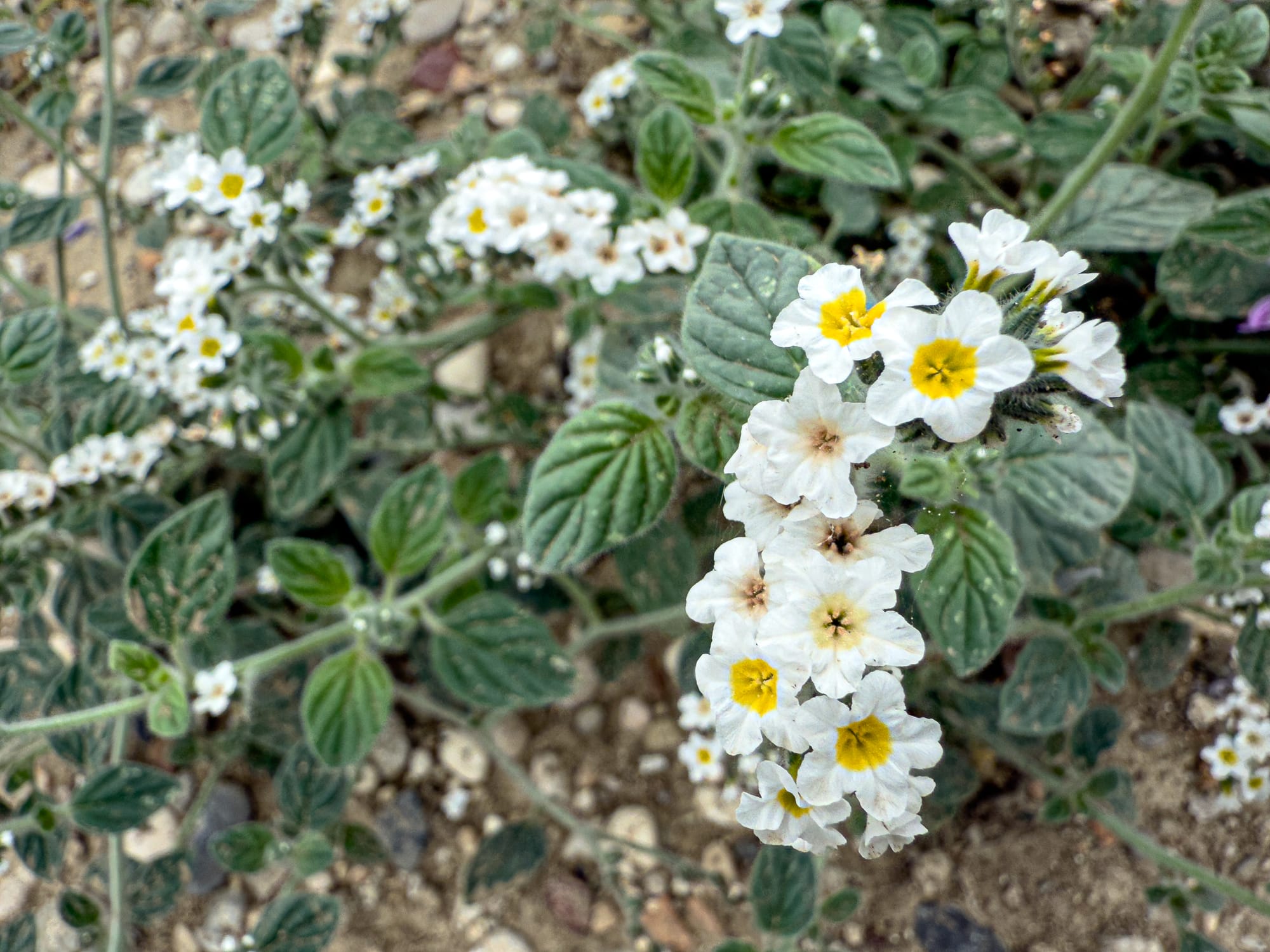
One of the more unexpected floral finds is the caper bush (Capparis spinosa), whose striking purple filaments and rounded leaves often grow between wall stones or along the edges of paths. These plants are hardy and drought-resistant, making them especially well suited to ancient ruins where earth and rock meet. The long, pinkish-purple stamens of the flowers offer a sharp visual contrast against the surrounding stone.
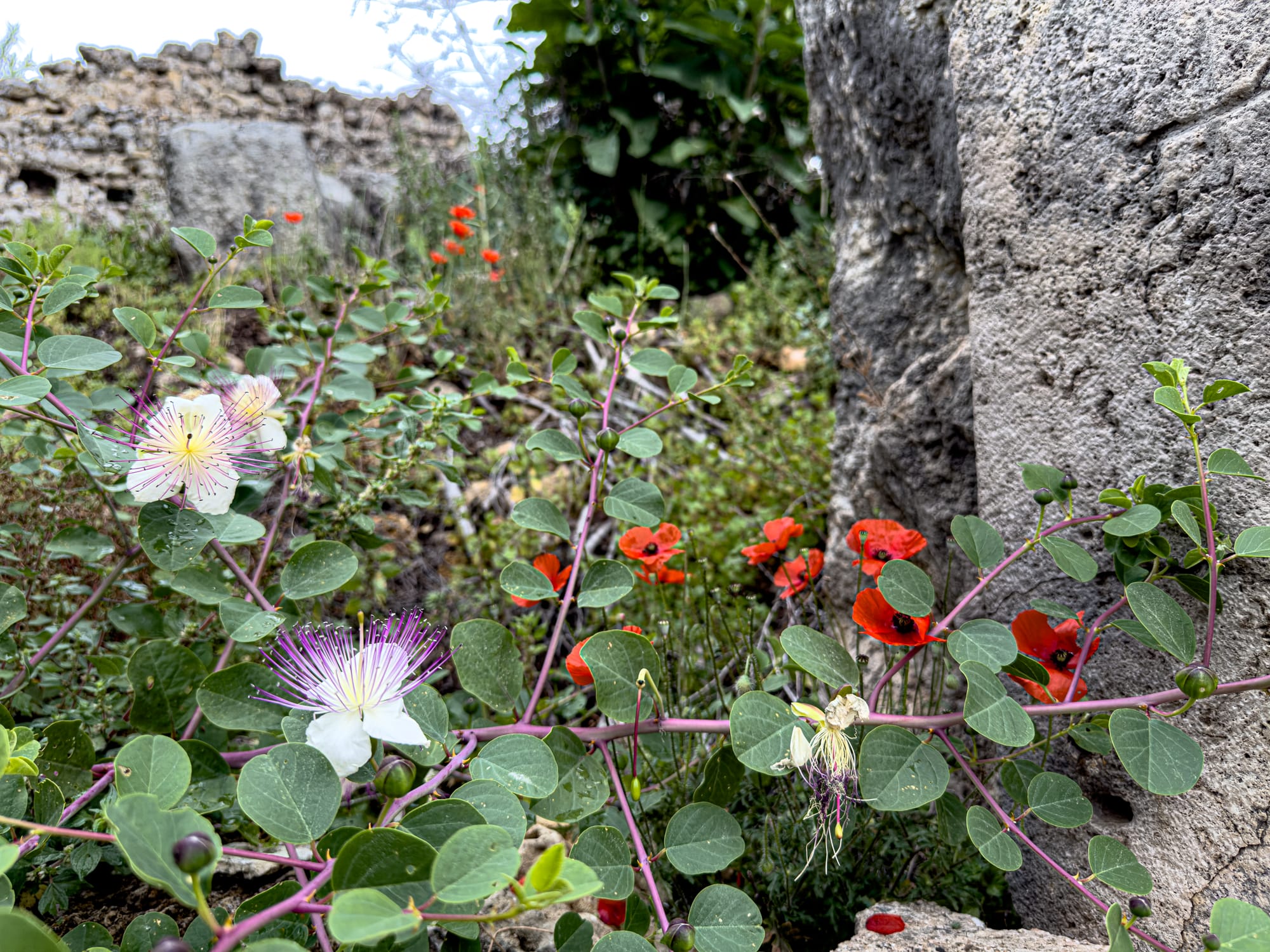
Taken together, this mix of flowering species adds a layer of texture to Perge’s atmosphere. These aren’t cultivated plants—they’re the result of years of natural adaptation.
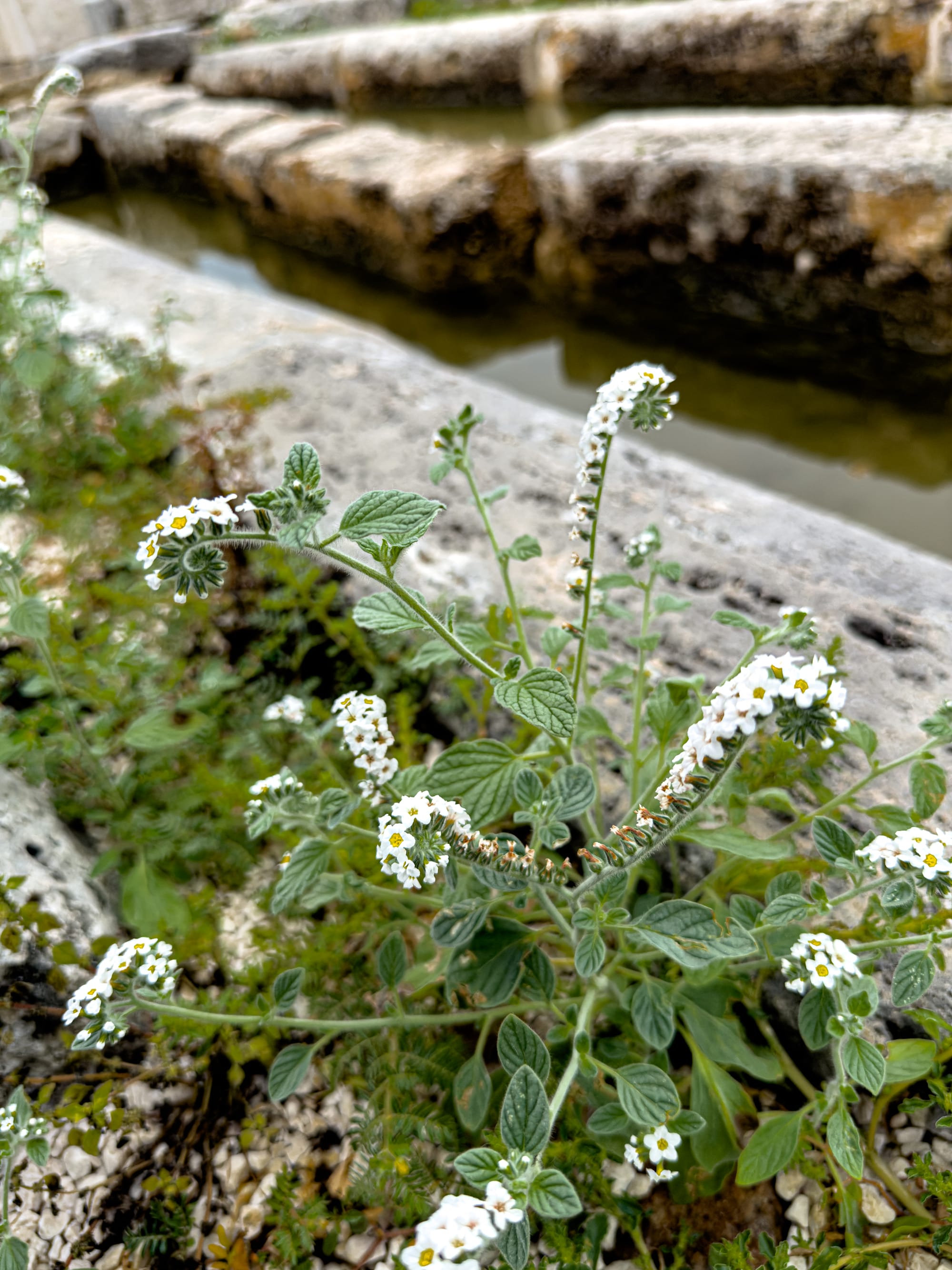
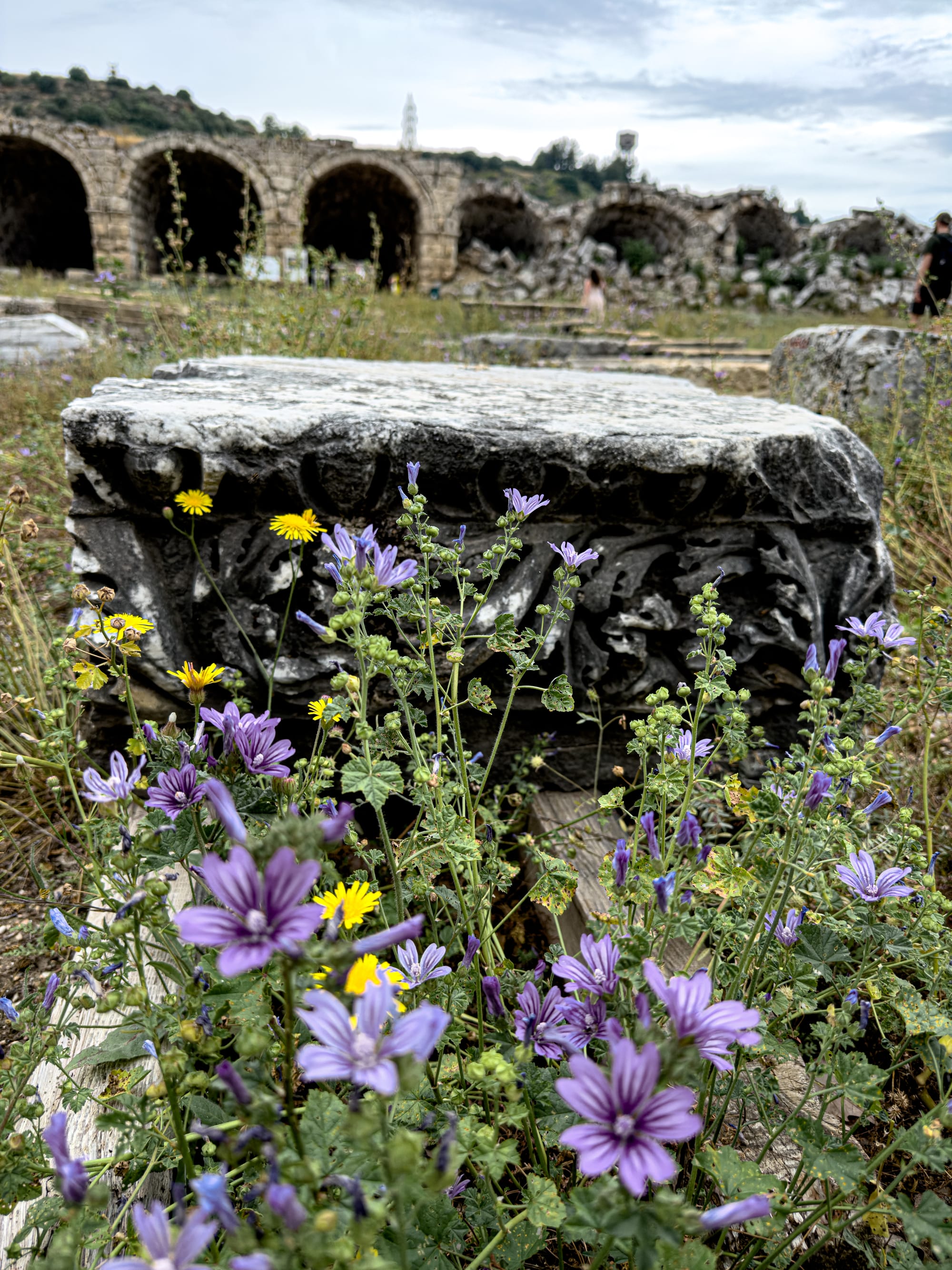
Wildflowers blooming beside ancient stonework and fountains at Perge
Their presence offers a subtle reminder that nature has been reshaping this city just as much as time and history have.
When to go and how long to stay
Perge is large enough to spend a couple of hours walking without retracing your steps, but not so big that it feels exhausting. Most visitors spend around 2.5 to 4 hours here, especially if they’re taking time to photograph or rest in the shade. It’s a great way to spend the first half of your day before heading back into the city for lunch or a swim.
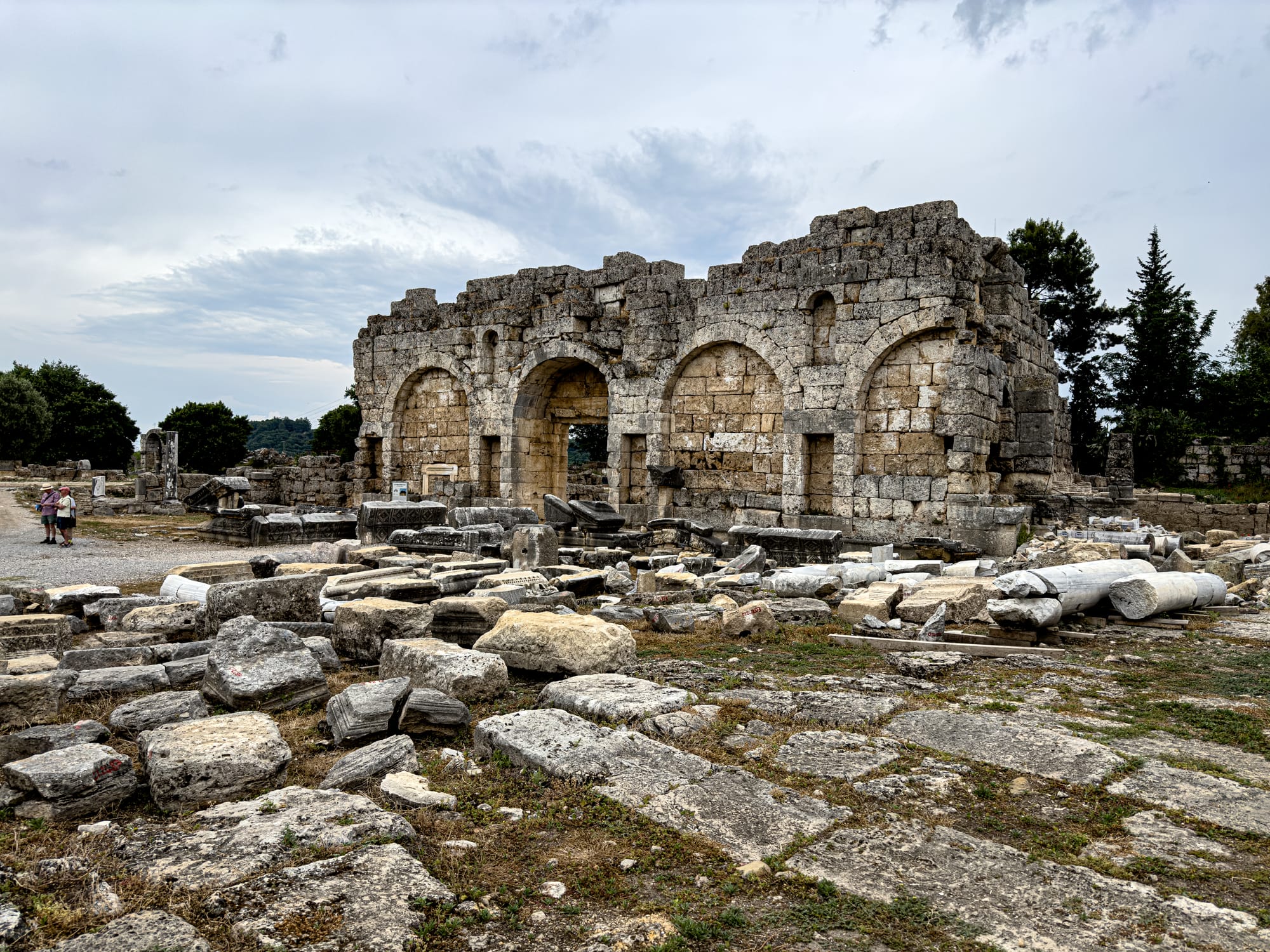
Because the site is exposed, it’s important to come prepared. If you're visiting during the summer, a hat and sunscreen are absolutely necessary. There’s very little shade, and the stone retains heat. Cooler days or early mornings are ideal. Bring water—there’s a small tap near the entrance, but it’s best not to rely on it being operational.
Getting there from Antalya
Getting to Perge is straightforward. You can drive there easily from Antalya, or take the tram to Aksu and walk about 15 minutes. For those who want a more seamless experience, especially one that includes historical background and transport, there are well-reviewed tours that combine Perge with other nearby sites like Aspendos and Side. These tours usually run for about 6 to 8 hours, but Perge itself is typically the first or second stop, meaning you can explore before the midday sun is at its peak.
Many travelers choose to rent a car for the day, especially if they plan to combine Perge with a stop at Kurşunlu Waterfall or a late lunch at a countryside lokanta. You can also hire a driver for a private trip, which can be surprisingly affordable when split between a small group.
If you’re looking for a no-stress option that includes everything from pickup to local insight, this full-day guided tour from Antalya is one of the most popular and well-organized choices. It visits Perge in the morning, followed by stops at Aspendos, Side, and a nearby waterfall. The guide provides historical context, and transportation and lunch are included—making it easy to fit several highlights into a single day.
Tips for visiting Perge
Wear closed-toe shoes with good grip—the terrain alternates between flat stone, gravel, and uneven paths.
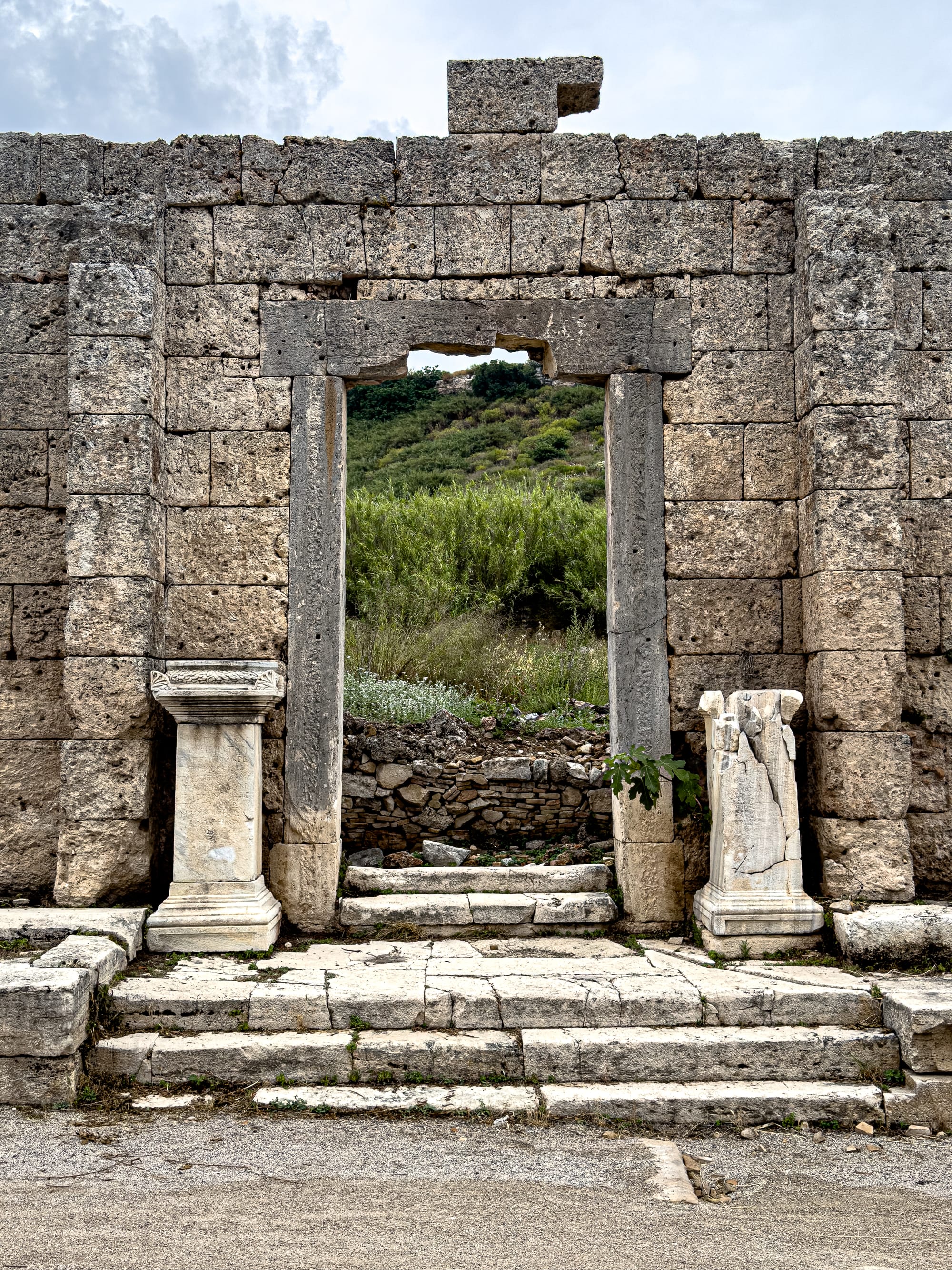
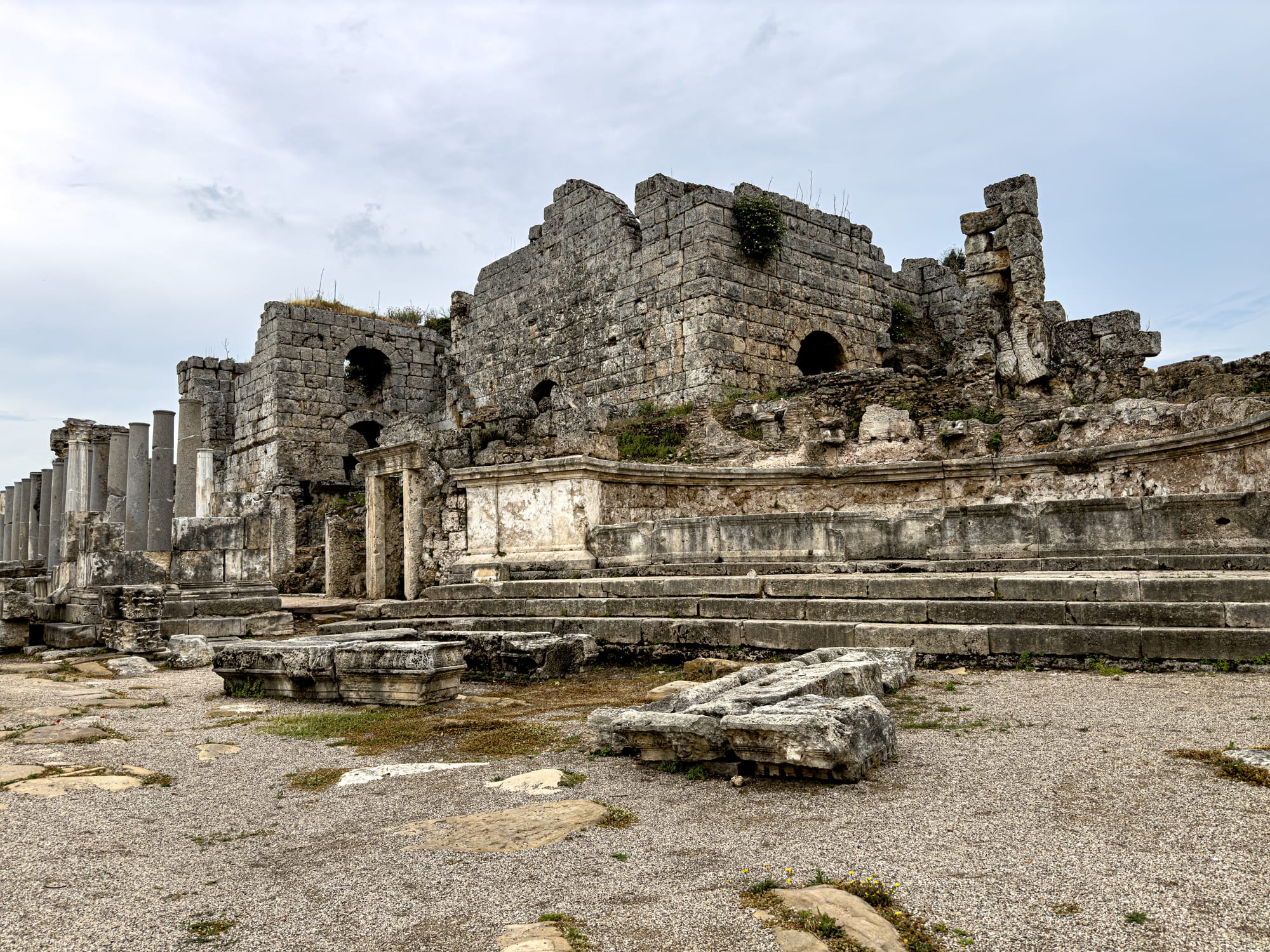
Architectural fragments and preserved entrances at Perge, showing both structure and decay in the city’s public buildings
While it’s not strictly necessary to have a guide, some visitors do find it useful for understanding the history of each section. Many group tours include a short introduction to the city’s layout and key historical points.
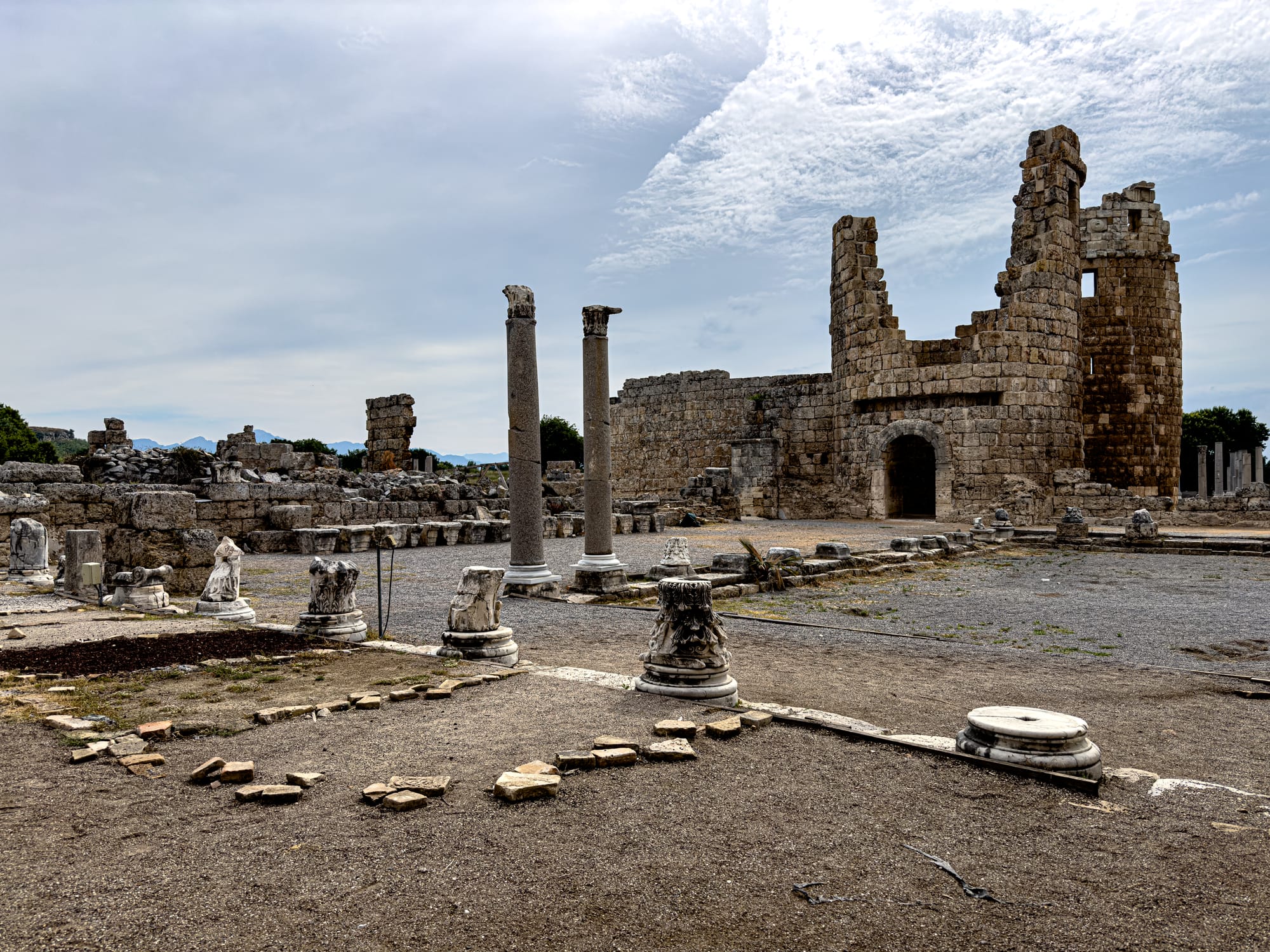
Photography-wise, early morning is best for light and crowd-free frames. The cactus flowers near the agora and the arches near the stadium make for especially photogenic stops.
Perge is solid and grounded—a place where you can wander through remnants of daily life from thousands of years ago, without needing to rush. If you’re based in Antalya for a bit and want to do something different, quieter, and visually rich, Perge is one of the best options around, especially because it is so close. You’ll return with red-dusted shoes, a camera full of sunlight-on-stone images, and the sense that you spent your morning well.
Interested in going? We did this tour and highly recommend it. It also goes to Side and Aspendos, which are both worth seeing in their own right.






